Time Slip Takasago Sanpo-Map
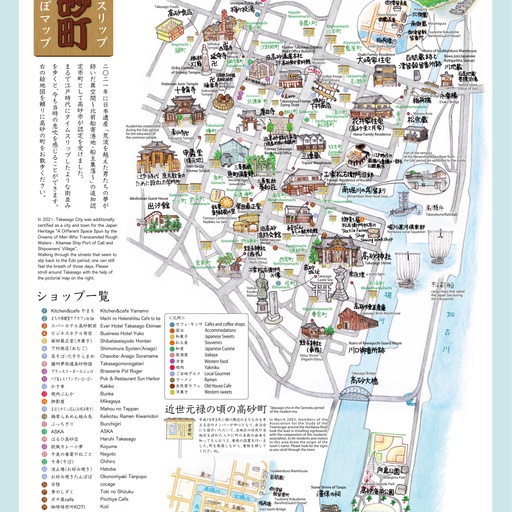
Takasago, a port town that has existed since the Edo period, still retains the scenery of those days. Please walk around the streets and visit historic sites feeling like you are traveling into Edo and Meiji periods, using the Stroly digital map and following the street name signs. Please enjoy Takasago Nostalgia by using the GPS of your smartphone or tablet to walk through the streets of Edo and Meiji Periods.
 Posted by高砂市観光交流ビューローUpdated:
Posted by高砂市観光交流ビューローUpdated: All spots information
90 spots
 Recommended Spots
Recommended Spots
Monument of "Love"
![]() Recommended Spots
Recommended Spots
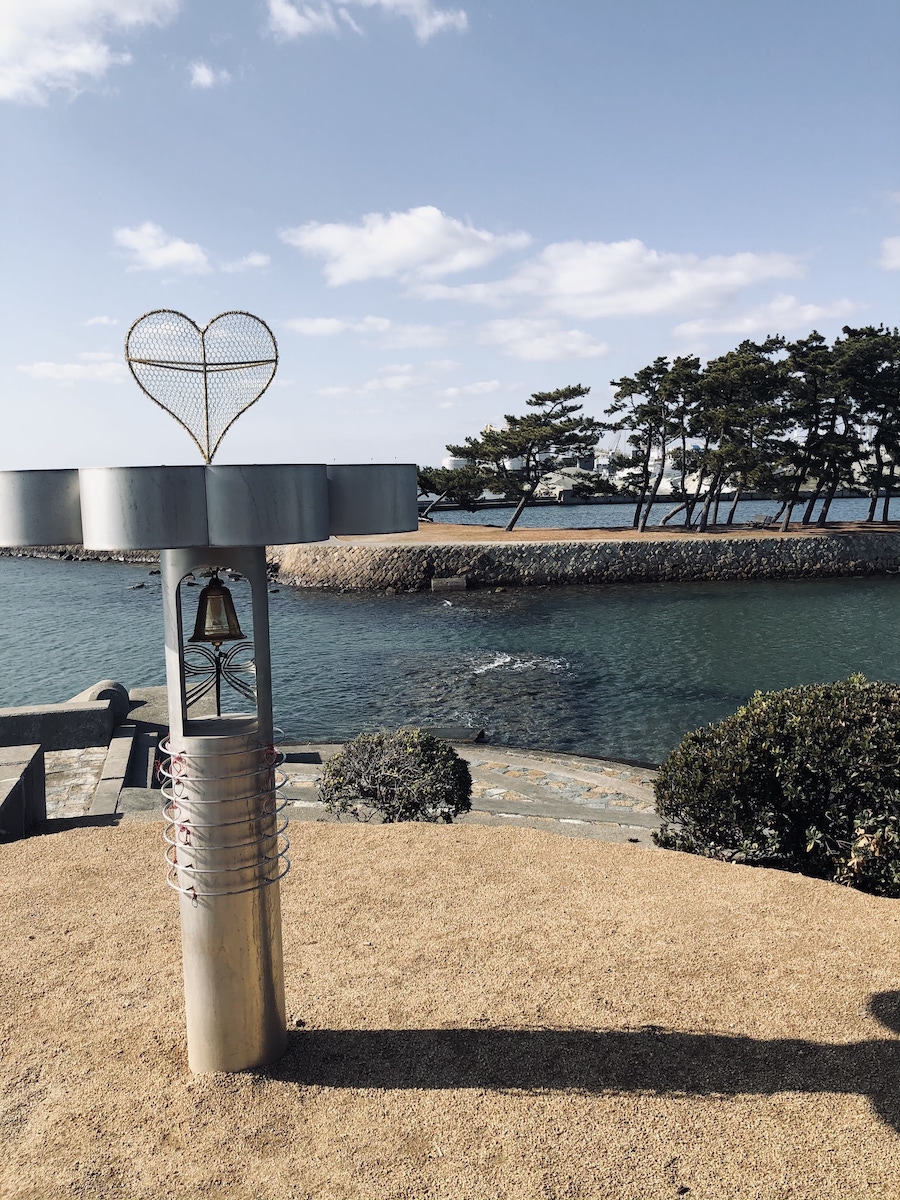
LocationMukojima-cho, Takasago-cho, Takasago-shi, Hyogo, Japan The Takasago Junior Chamber of Commerce produced the monument to commemorate the 60th anniversary of its founding. The silver-colored body, more than 2 meters tall, is decorated with auspicious items such as a gold bell, a wire that can be used to tie Mizuhiki, a type of paper used for congratulatory gifts, and a gold heart-shaped ornament on top.
Mukojima Breakwater
![]() Recommended Spots
Recommended Spots
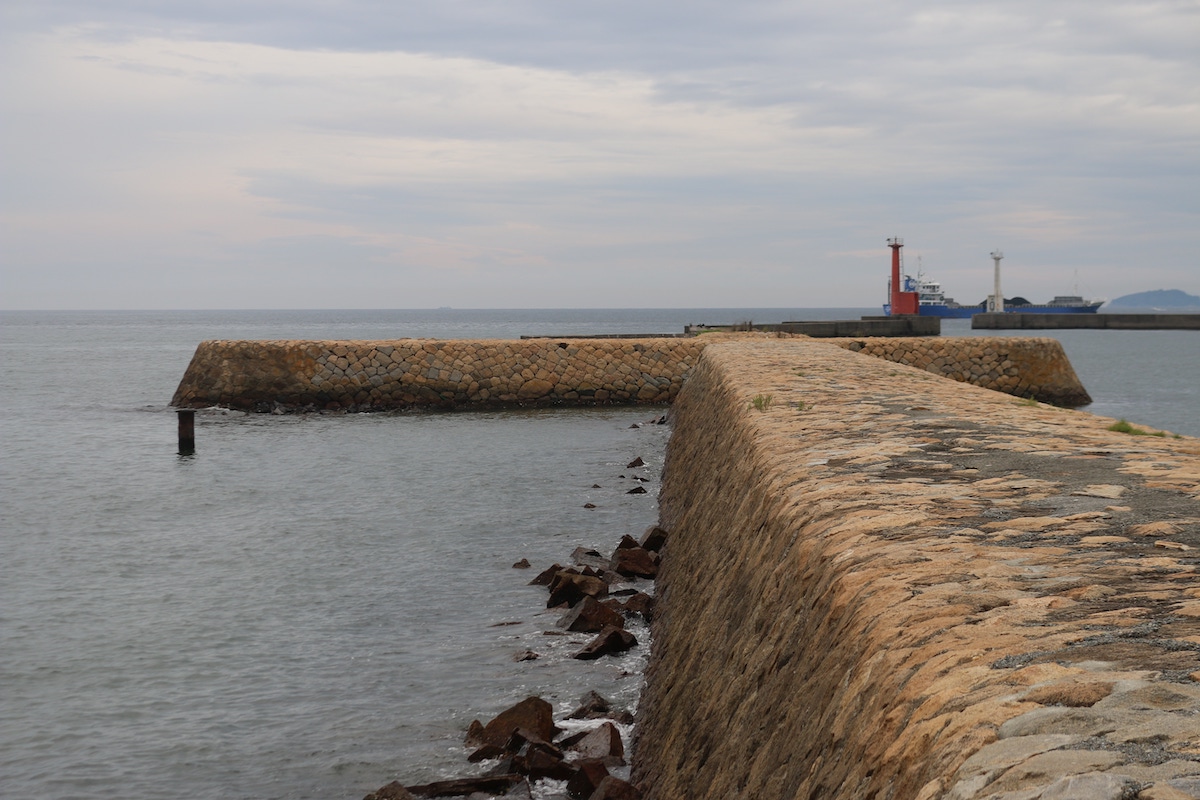
At the end of the Edo period, Takasago Port was in trouble because of sediment accumulation, which reduced the function of the port, Kouraku Matsuemon, who returned to Takasago in his later years, renovated the harbor. he dredged using boats that carry pottery (Rokurosen), earth and sand (Dosyadumisen), and stone (Ishitsurisen) that he had developed himself, and also built a breakwater.
Stone Shrine of Tanpo
![]() Recommended Spots
Recommended Spots
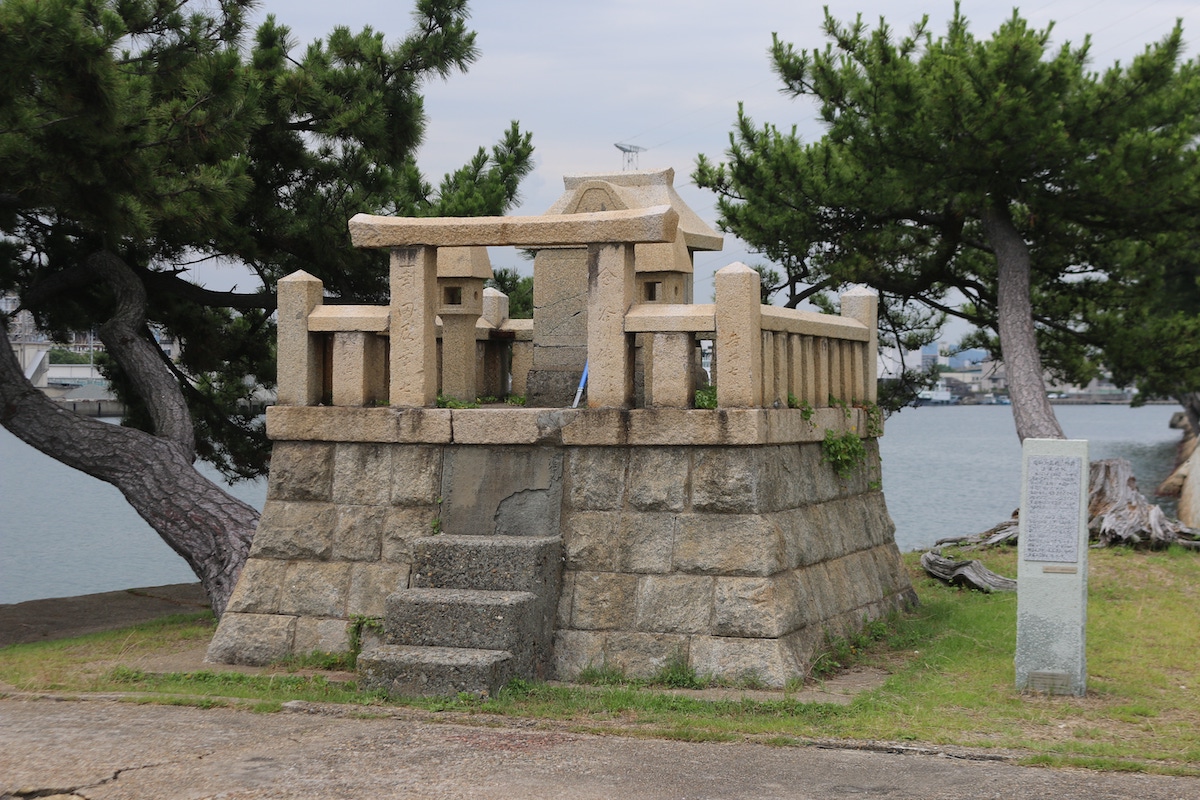
On the base of the stone shrine, inscriptions of the harbor improvement in 1929 and Tanpo Fushin Kensyo(commendation for the construction in 1864) with the names of the third-generation Kouraku Matsuemon and others have been inscribed. It was originally located in Minamizaimokumachi on the opposite bank of the river but was moved to this location in the mid-1970s.
Ruins of Kawaguchi Gobansyo
![]() Recommended Spots
Recommended Spots
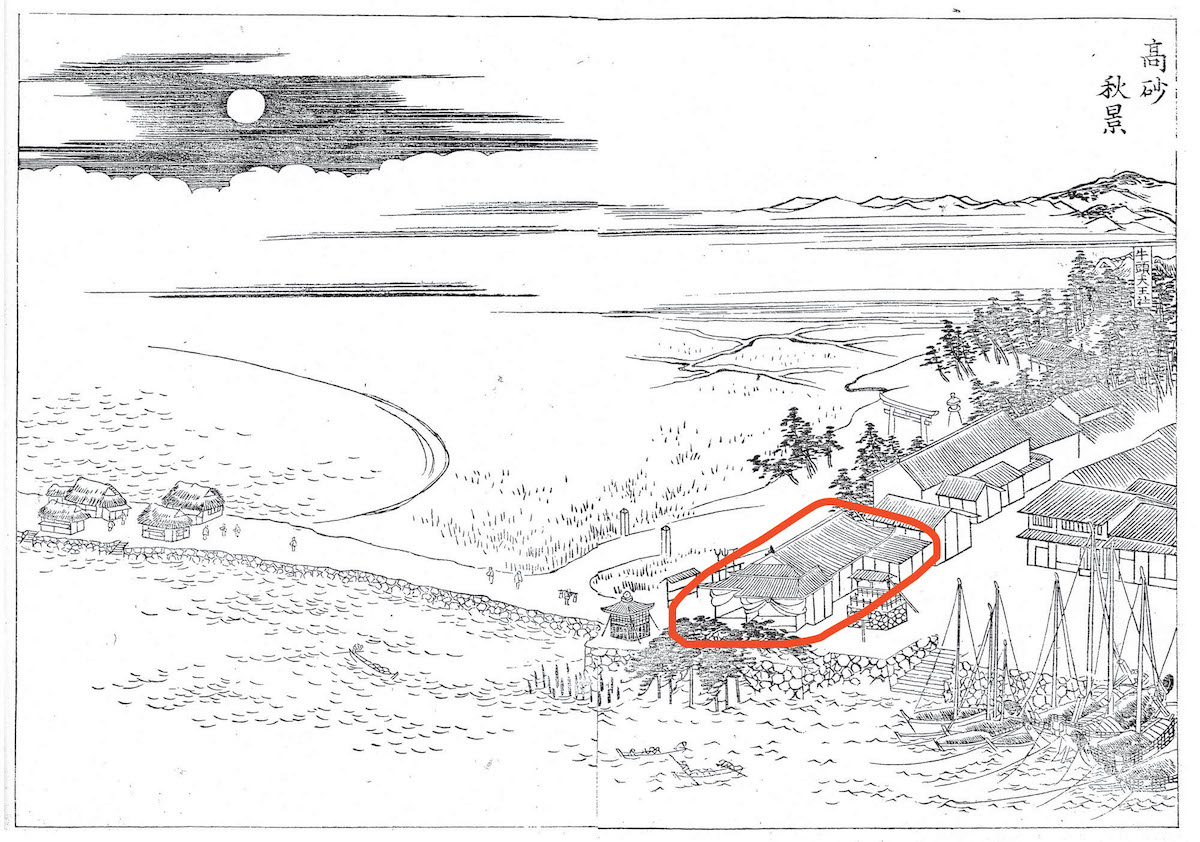
Kawaguchi Gobansyo was established in the Edo period at this place near the mouth of the Kako River. It was a government office under the direct control of the Himeji Domain, where officials were stationed to manage the shipping lanes entering the port of Takasago and to monitor marine traffic. Tiles of the family crest of the Ikeda family, lord of Himeji Castle, have been found.
Ideshiokan Guest House
![]() Recommended Spots
Recommended Spots
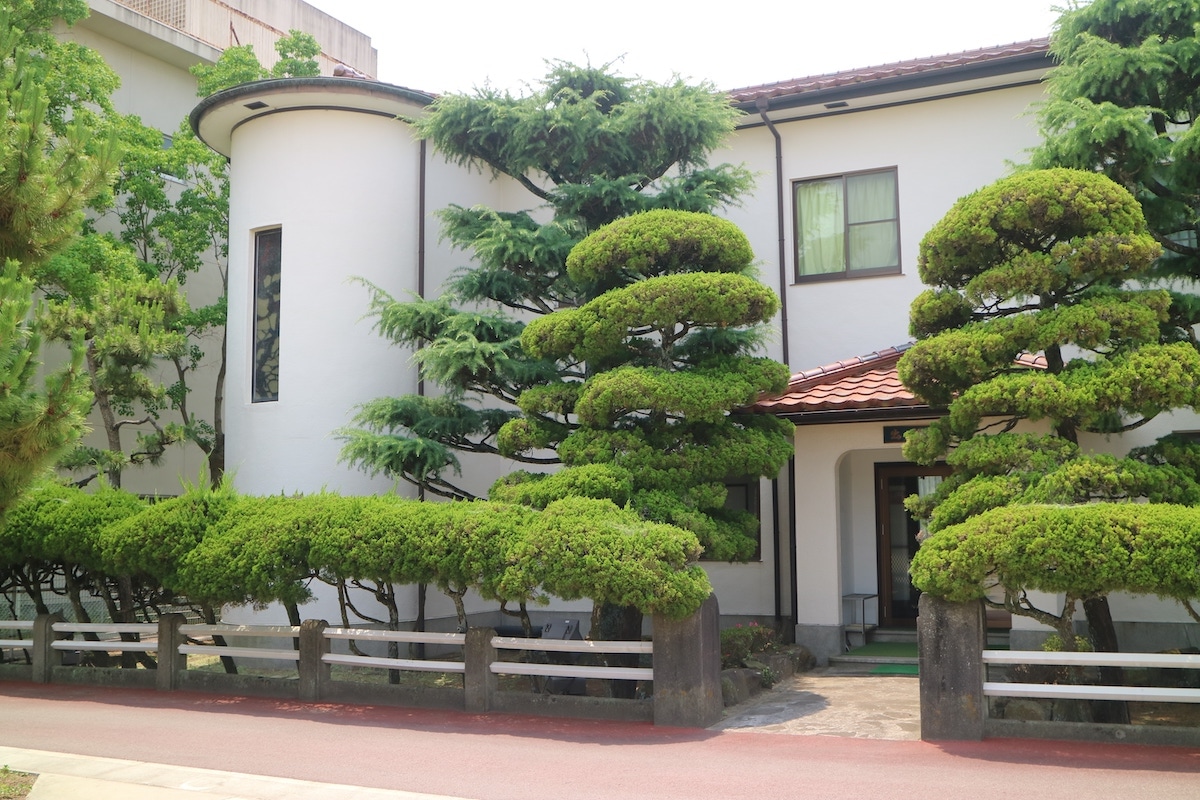
Location1 Nishihata, Takasago-shi, Hyogo, Japan It was built in 1936 as a club for the management position of the factory of Kanegachibouseki, Ltd., it is currently used as a welfare facility of Kaneka Corporation. It is a building of prewar modern architecture characterized by its arc-shaped protruding staircase, stained glass on the landing, and bay windows on the second floor.
Oribe Lantern of Enmeiji Temple
![]() Recommended Spots
Recommended Spots
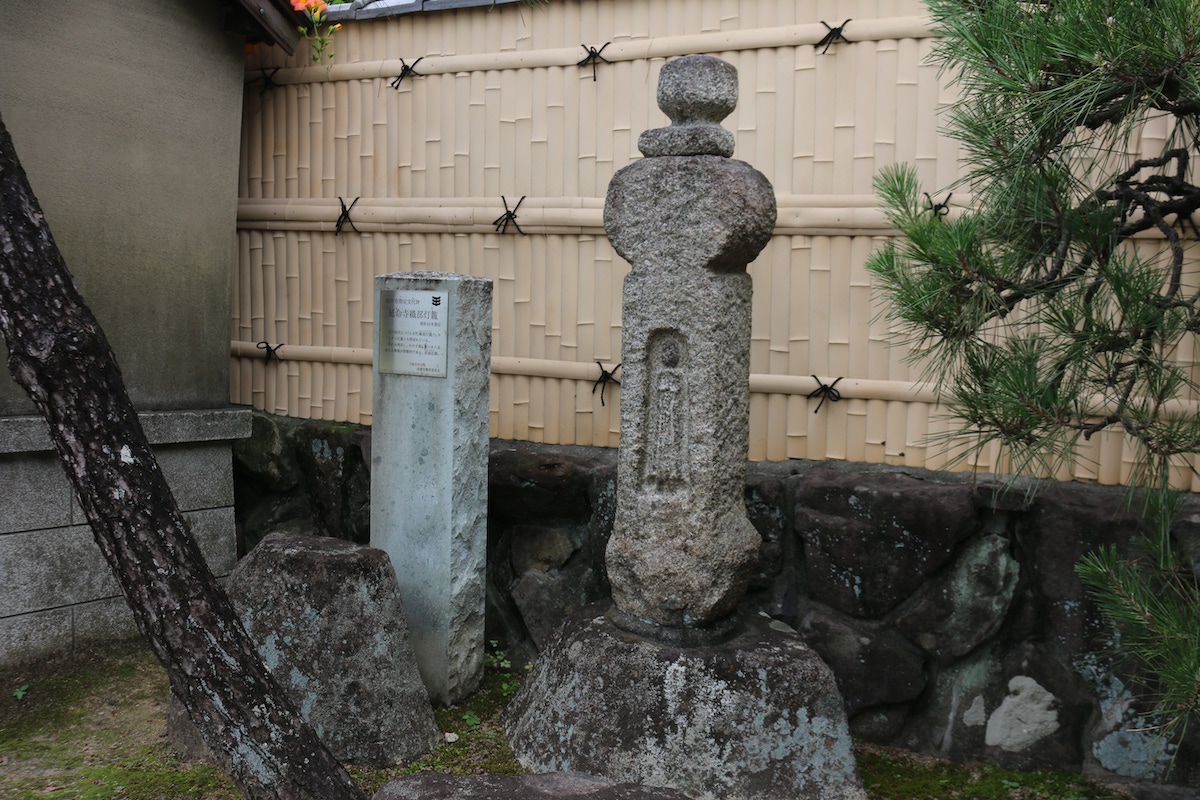
LocationYokomachi, Takasago-cho, Takasago-shi, Hyogo, Japan It was created in the mid-Edo period (Kyoho era) and it is said to be an object of worship for hidden Christians because of the shape of the stone pole and the sculpture and is also called a Christian lantern. There is also an Oribe lantern donated by the Kishimoto family in Shingido School, located south of Enmeiji Temple.
Ruins of JNR Takasago Line
![]() Recommended Spots
Recommended Spots
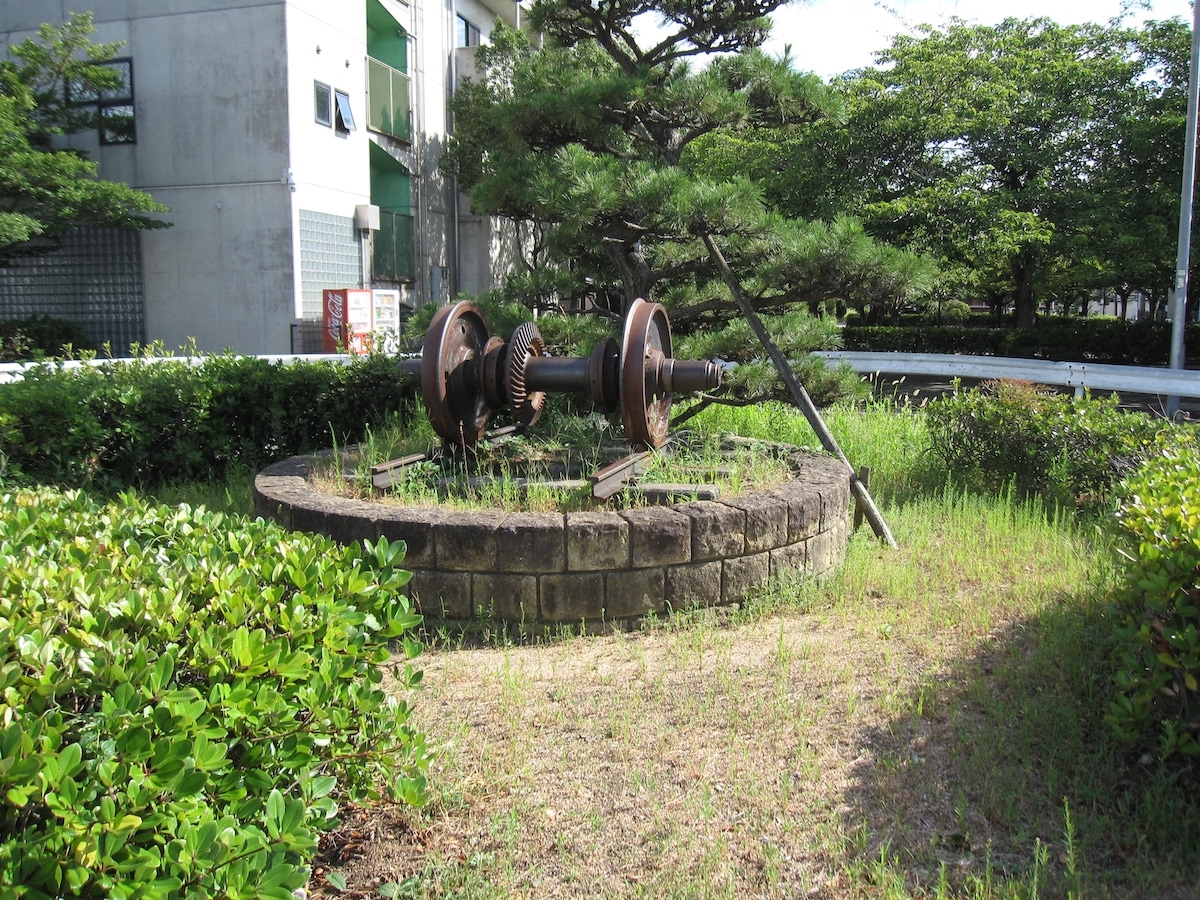
The line was built in 1914 as a railroad from Kakogawa to Takasago. There was also a dedicated line to the Takasago factories of Japan National Railways, Kikkoman Corporation, Mitsubishi Paper Mills Limited., etc. The line served as a major regional artery for both passengers and freights until it was discontinued in 1984.
Former Takasago Express Head Office Building
![]() Recommended Spots
Recommended Spots
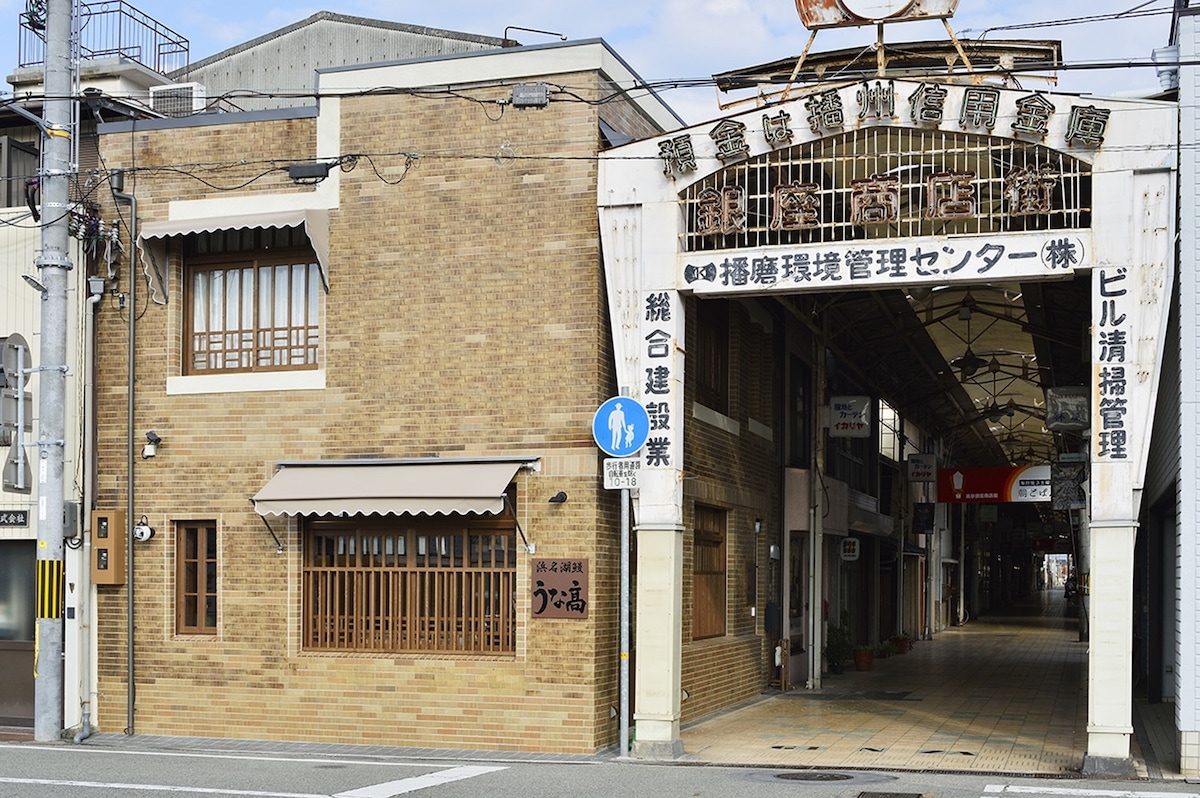
Location1396 Aza-Kajiya-machi, Takasago-cho, Takasago-shi, Hyogo, Japan Web Site It was built in 1939 as an office in front of Takasago Station of the former Japanese National Railways. It is a two-story wooden building with brick and scratch tiles. The horizontal lines of the walls are in a modernist architectural style. It was renovated in 2015 and is used as a store and exhibition room. Registered National Tangible Cultural Property, Prefectural Structures of Landscape Formation Importance
Sanrengura(Triplex Warehouse)
![]() Recommended Spots
Recommended Spots
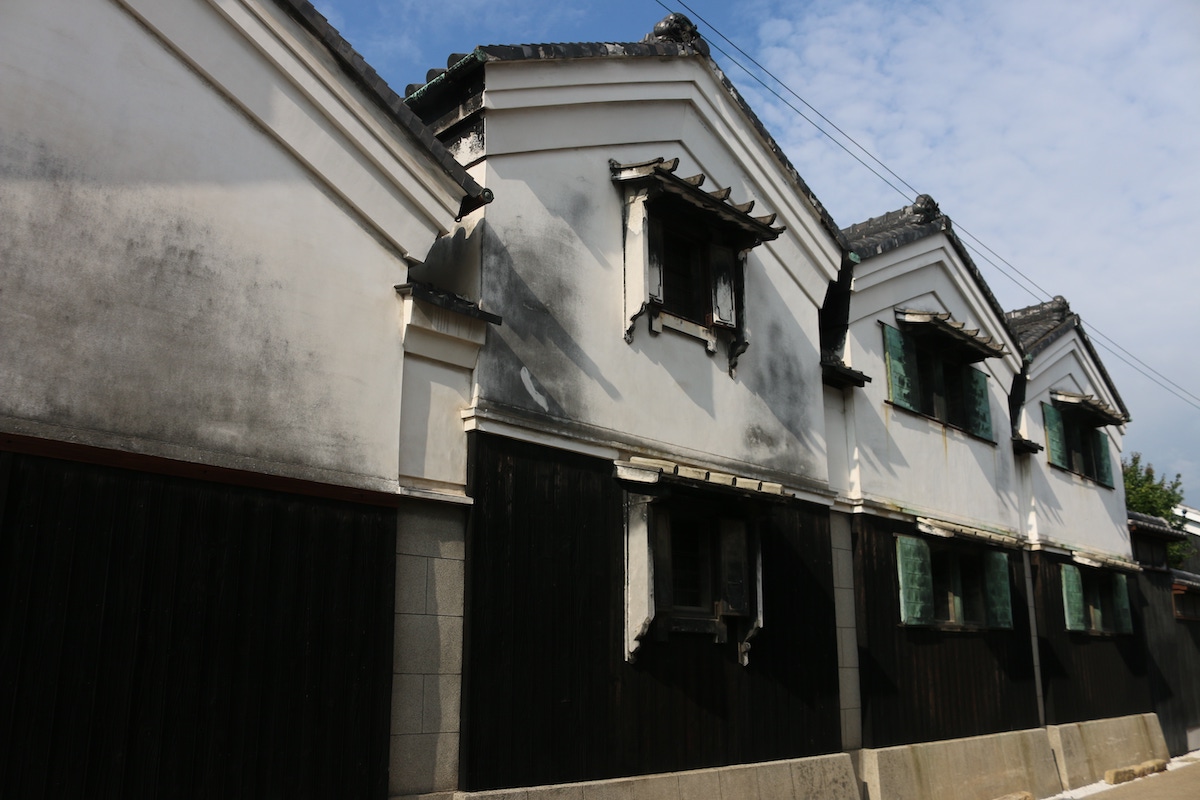
Location888 Minami-Honmachi, Takasago-cho, Takasago-shi, Hyogo. Japan It consists of triplex wooden storehouses of the same shape built in the early Meiji period. It has a masonry paved platform, exterior walls of burnt cedar shingles, white plaster, and a tile roof, and is designated as an important building for scenic beauty by Hyogo Prefecture. The building is designated as Prefectural Structures of Landscape Formation Importance. Prefectural Structures of Landscape Formation Importance
Osaki Family Residence
![]() Recommended Spots
Recommended Spots
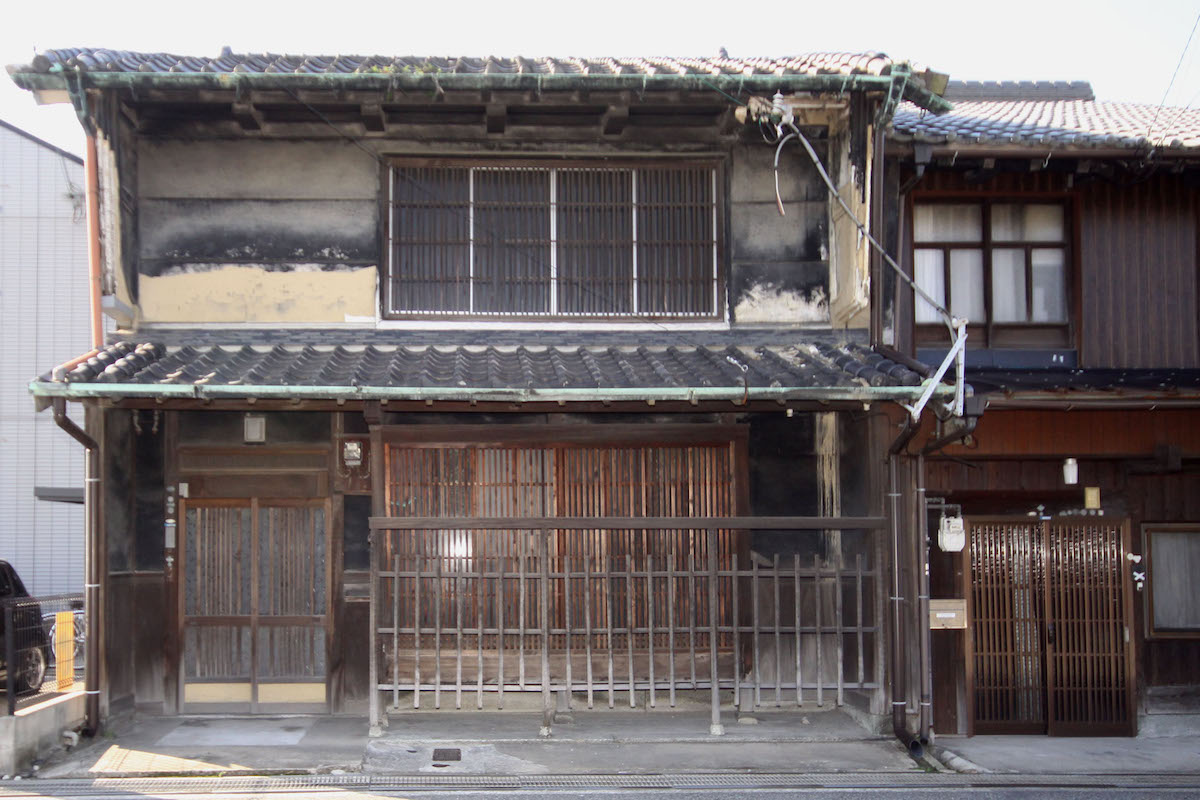
Location1667 Aiya-machi, Takasago-cho, Takasago-shi, Hyogo, Japan Web Site It was built in the late Meiji period by the Osaki family, who ran a lumber wholesaler, Osaki Shoten, as a residence for their retired family members.It is a two-story traditional wooden townhouse facing north on Hama Kaido Street, with latticeworks in front and Udatsu on both sides of the roof supported by beams. It is one of the typical modern townhouses in Takasago-cho. Meiji period (1898-1912), 2-story wooden structure with tiled roof, 105㎡ Registered National Tangible Cultural Property
Kawa Jizo(Japanese Ksitigarbha Statue)
![]() Recommended Spots
Recommended Spots
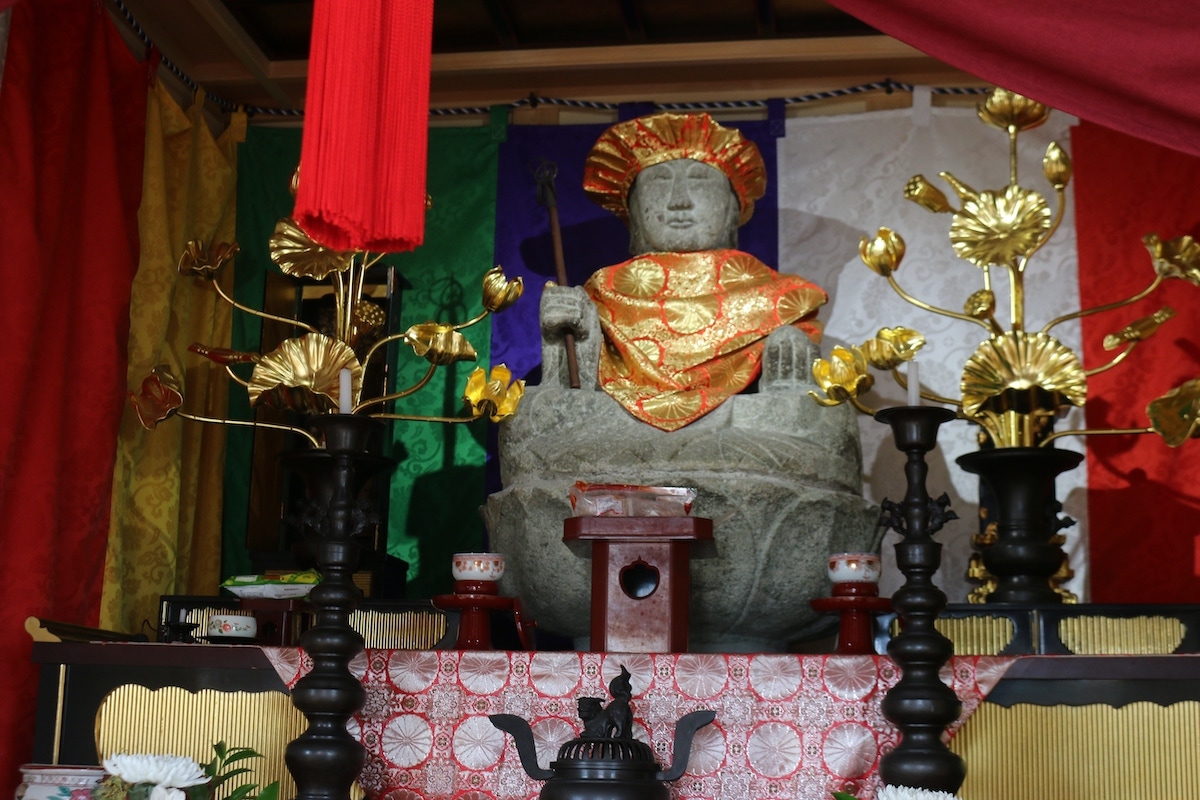
The stone Jizo statue inside the hall is said to be the image of Takuhi Daigongen of Oki Island in Shimane Prefecture and was built to pray for maritime safety.It is said to have been built by Toku Shonin of Jurin Temple in 1764. It was moved a few meters to the north in 2020 due to a road widening project.
Ruins of Hyakkengura Warehouse
![]() Recommended Spots
Recommended Spots
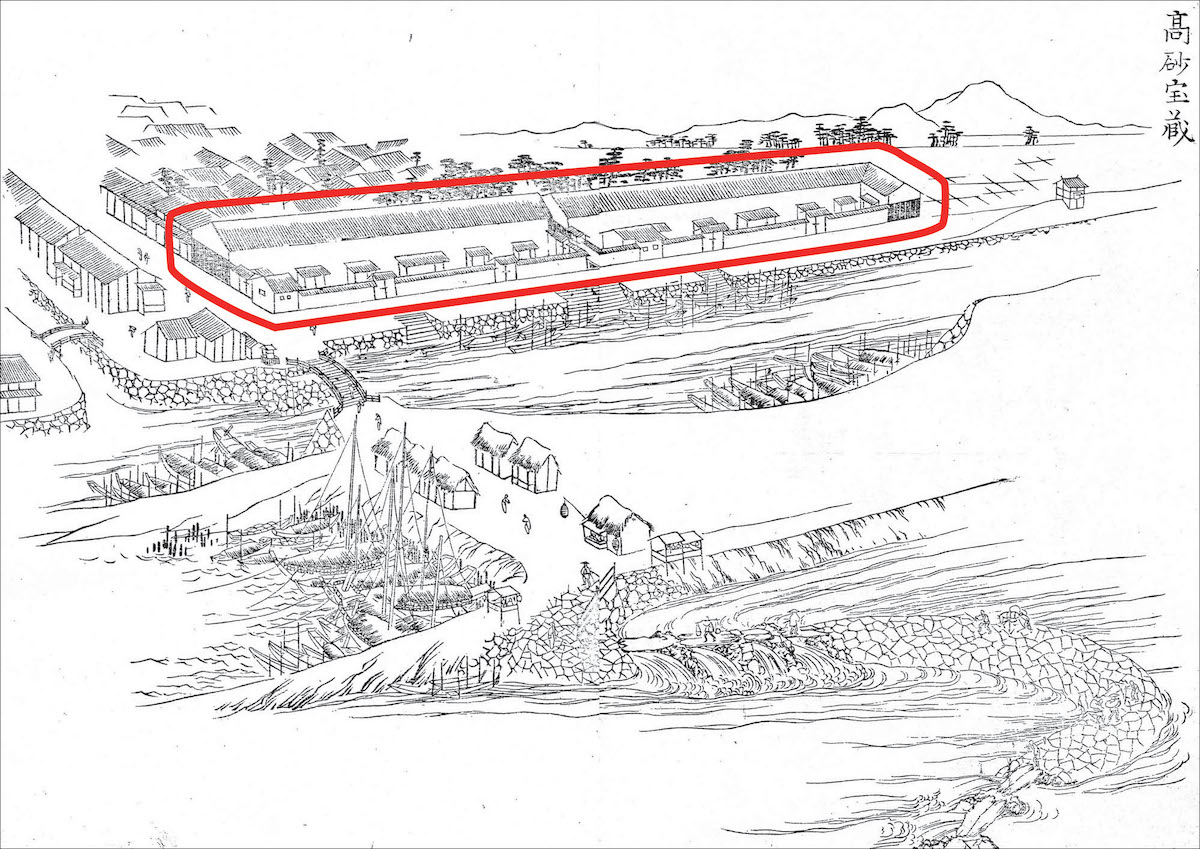
LocationTakasago-cho Sakae-machi, Takasago-shi, Hyogo, Japan Web Site It managed the annual tribute of rice and other goods for the Himeji Domain in the Kako River basin. It was 100 ken (about 182 m) long and consisted of 48 ken (south storehouse) and 52 ken (north storehouse), and was capable of holding 90,000 bales of rice in approximately 60 kg bales. It was located in the southeast corner of the present site of Mitsubishi Paper Mills, Ltd.
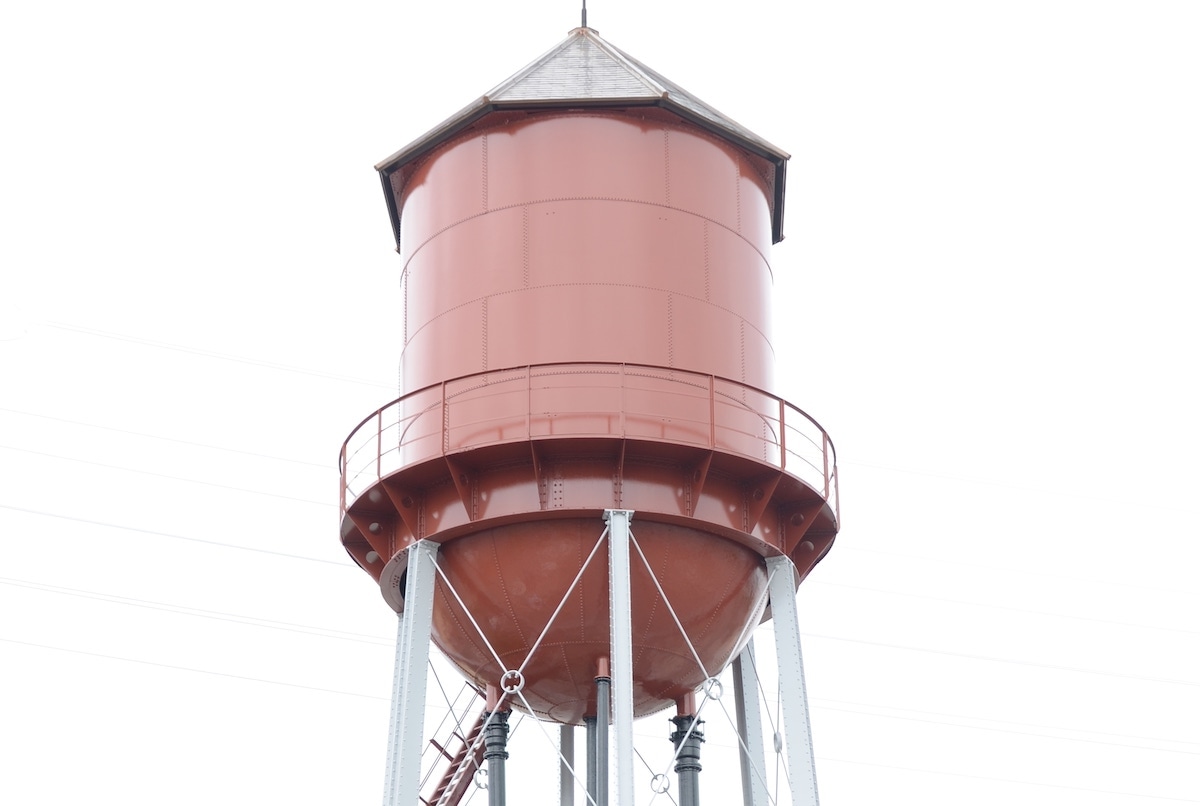
Location1-2-1, Asahi-machi, Takasago-cho, Takasago-shi, Hyogo, Japan Web Site It was built in 1923 to supply water to Takasago-cho. The steel-framed water distribution tower supporting the 26-meter-high, reddish-bronze tank is like a rocket firework, a civil engineering heritage symbolizing the history of modern Takasago's water supply.It was designated as a Registered National Tangible Cultural Property in March 2003.Overview:Height: 26 meters,6.0 meters in diameter,8.8 meters in depth,Capacity: 200 tons,Material: Steel,Cost: 20,304 yen,Completion: October 25, 1923
Umegaeyu(public bathhouse)
![]() Recommended Spots
Recommended Spots
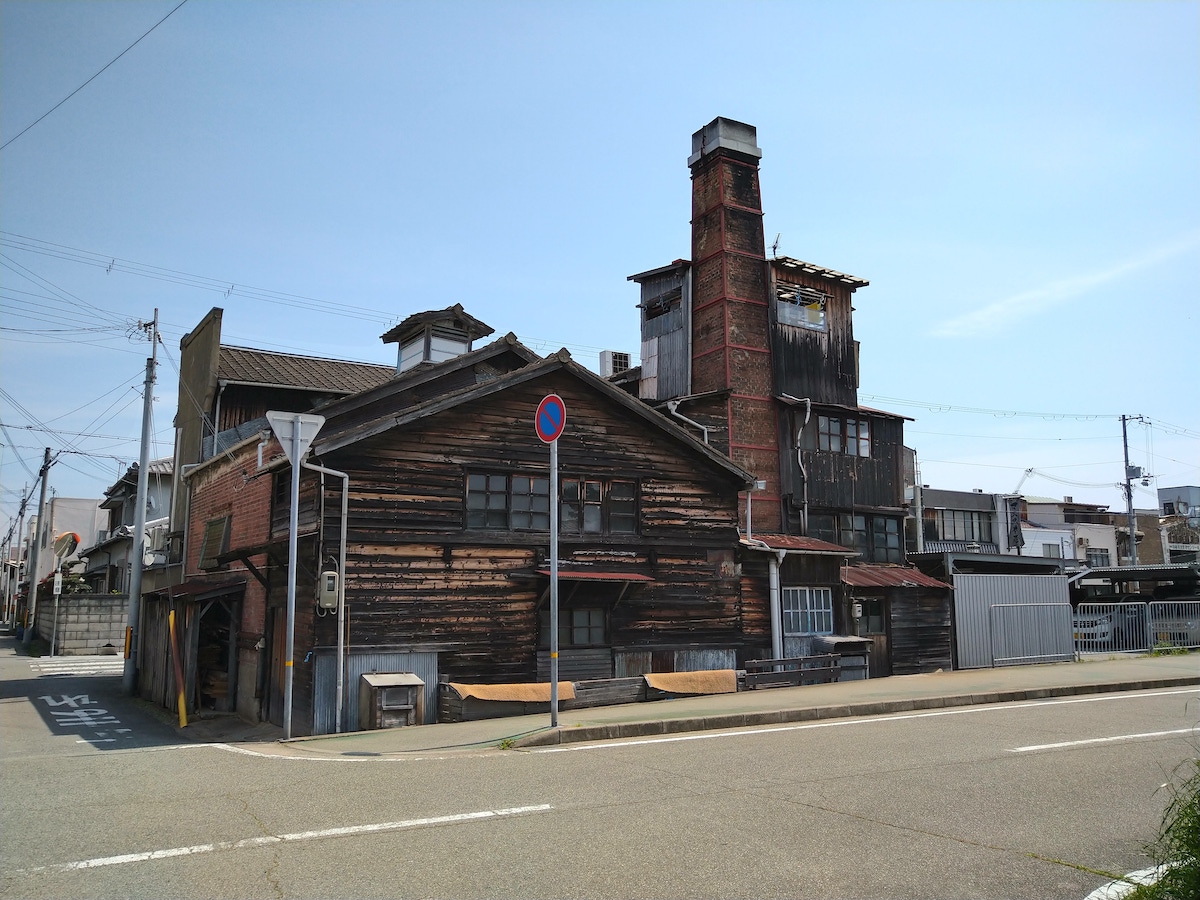
Location1593 Jirosuke-machi, Takasago-cho, Takasago-shi, Hyogo, Japan There were as many as seven Sento (public bathhouses) in Takasago-cho in the 1950s, when indoor baths were not common in residential areas. Umegaeyu, the only one still in operation, is a valuable building that retains its Showa-era atmosphere, including the interior and exterior and heating water with the use of wood.
Hobinsan Jurin Temple
![]() Recommended Spots
Recommended Spots
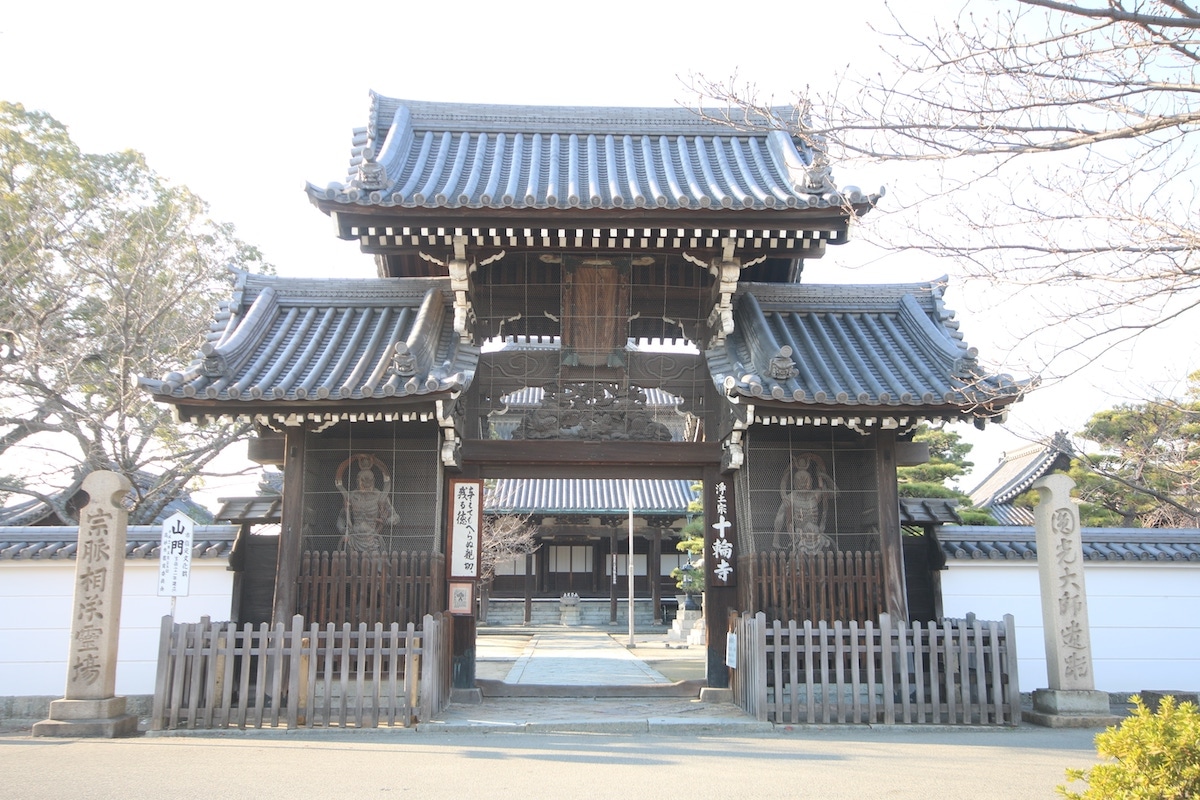
Location1074, Yokomachi, Takasago-cho, Takasago-shi, Hyogo, Japan Web Site Hobinsan Jyurin Temple is a temple of the Seizan-Zenrinji School of the Jodo Sect.It is said to have been founded by Kukai and was restored during the Kamakura period by Shinjakubo Shonin, a disciple of him.The entire temple complex is lined with Edo period structures, including the main hall built in 1697, a Kuri (priests' quarters) in the mid-19th century, a grand entrance around 1795, a small entrance in the early 19th century, and a gate in 1736. The cemetery, which occupies nearly half of the temple grounds, is where many residents of Takasago Town, including the lord of Takasago Castle, cultural figures, and businessmen, are buried. Many people visit this large temple complex for tours, memorial services, gravesites, and events.Jurinji Temple Main Hall (Prefectural Designated Cultural Property), Jurinji Temple Kuri and Sanmon (City Designated Cultural Property)"
Shingido Former School
![]() Recommended Spots
Recommended Spots
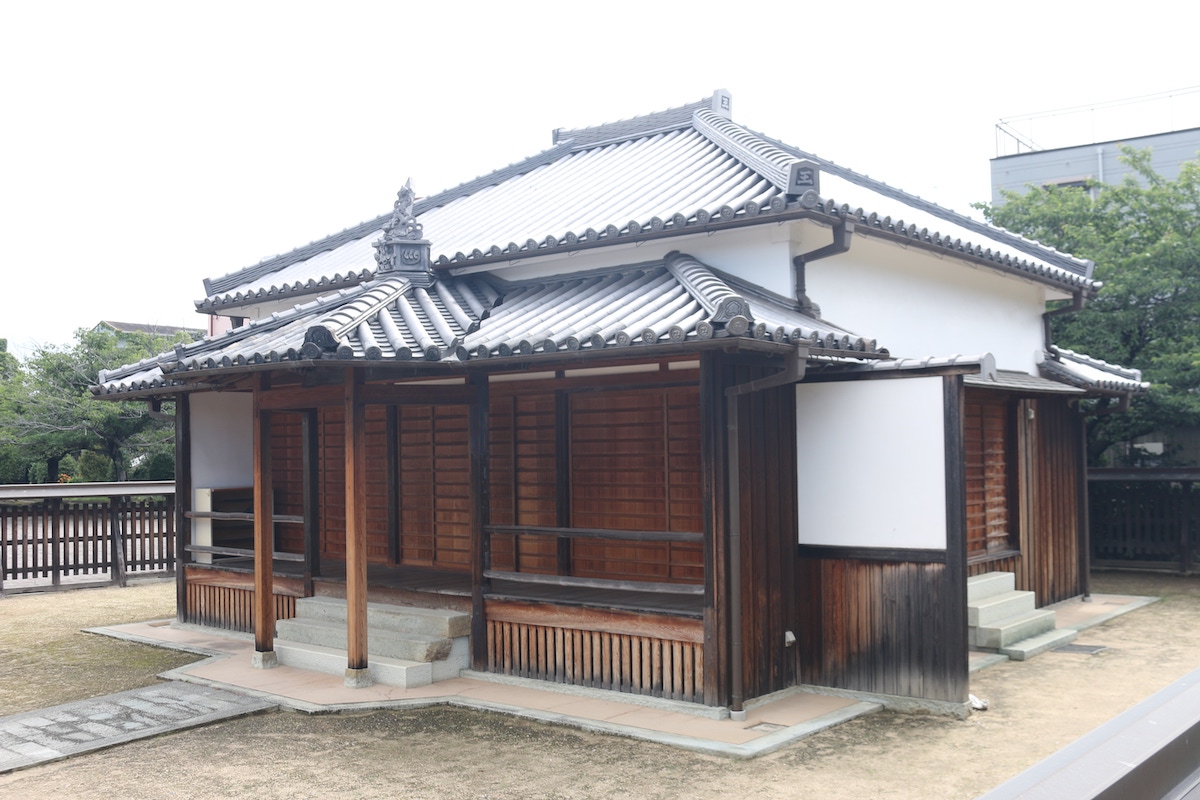
Location1074-5, Yoko-machi, Takasago-cho, Takasago-shi, Hyogo, Japan Business HoursSaturday, Sunday, Holidays 10:00 a.m. to 4:00 p.m. Except December 29 through January 3 Web Site Shingido Former School was established in the Bunka era of the Edo period by Kawai Sunou, Karo ,chief retainer of the Himeji Domain, for the education of the common people. Originally located in Kitahonmachi, it was restored to its current location. Local townspeople such as Minobe Shuho taught there as a place for children's education.City Designated Cultural Property
Takasagoya
![]() Recommended Spots
Recommended Spots
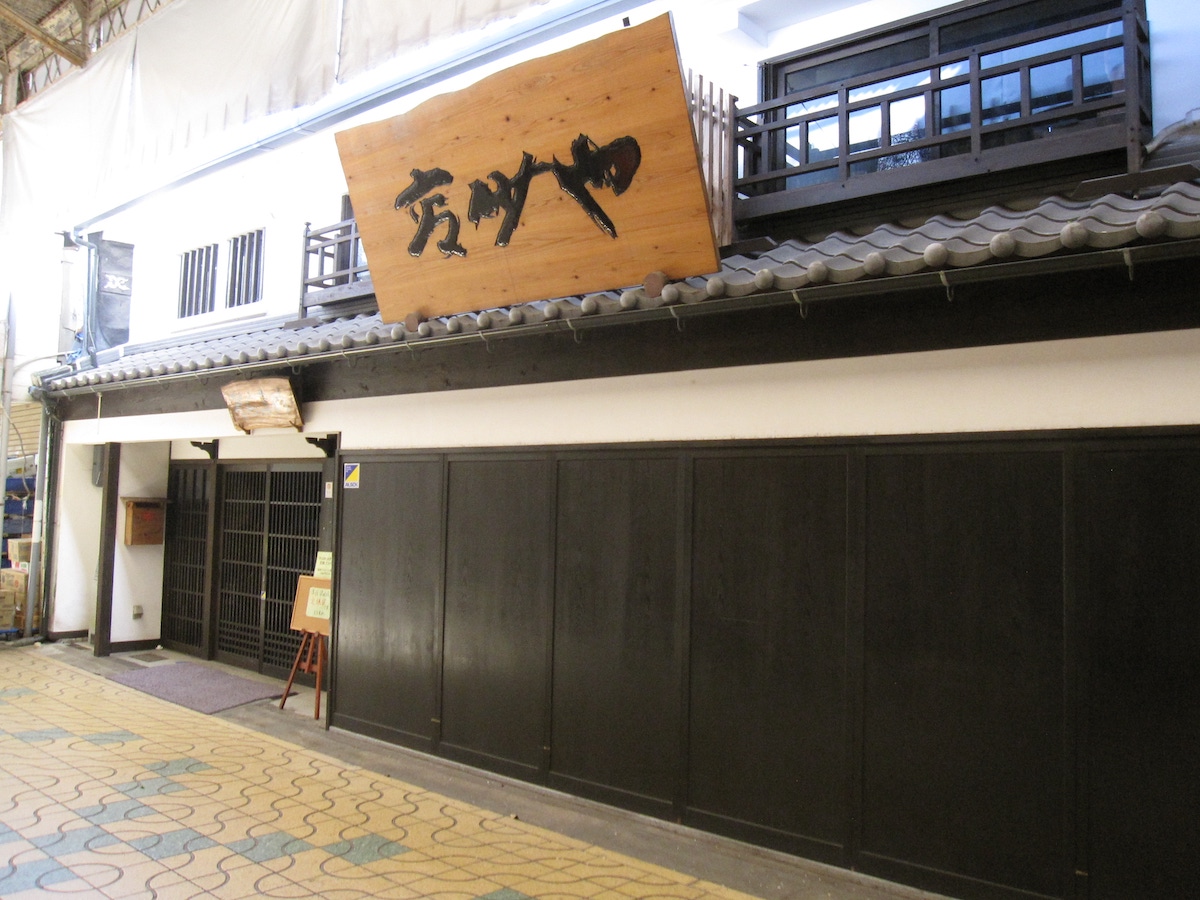
Location1416-1 Kajiya-machi, Takasago-cho, Takasago-shi, Hyogo, Japan Takasago-Zome (Takasago Dyeing) was a specialty product of the Himeji Domain during the Edo period and Terumasa Ikeda, the lord of the domain at that time, had Ozaki Shobei produce it. This is the residence of the Ozaki family, the birthplace of Takasago-Zome, and is currently used as a store "Takasagoya".
Former Takasago Bank Head Office
![]() Recommended Spots
Recommended Spots
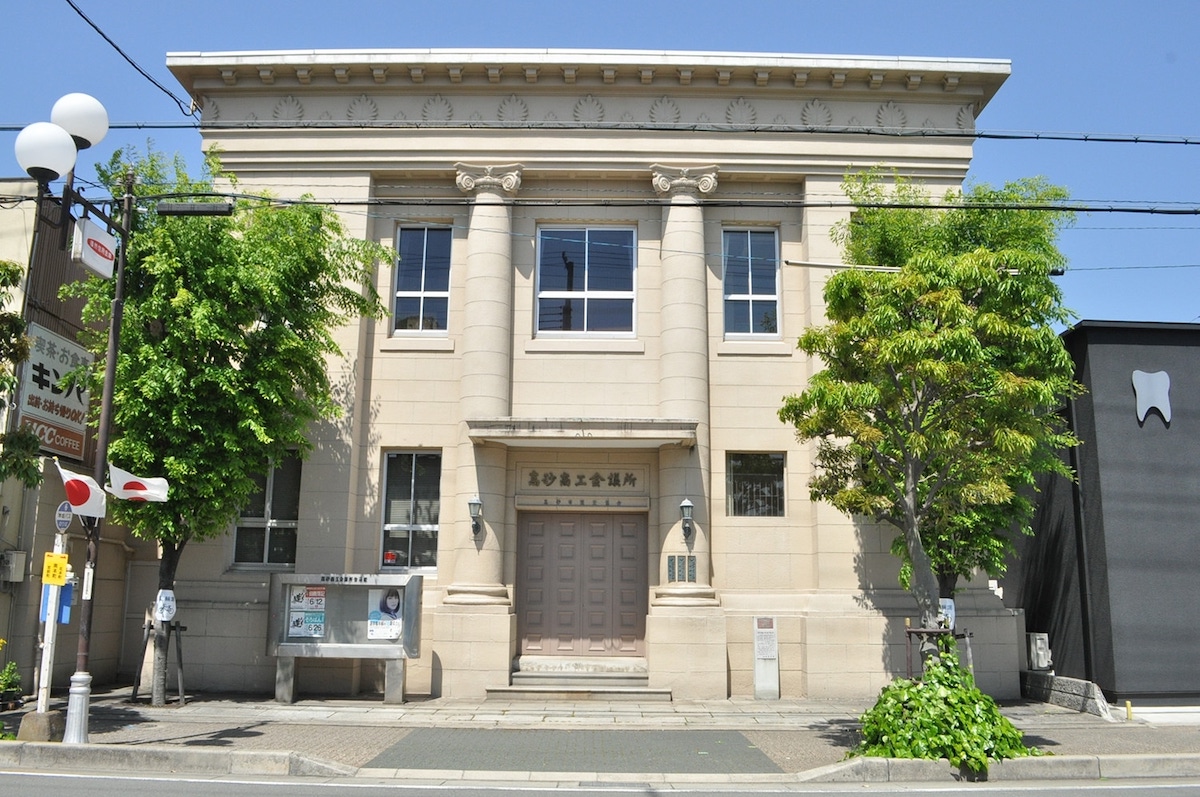
Location1104 Aza Kita-Honmachi, Takasago-cho, Takasago-shi, Hyogo, Japan Web Site It is built in 1932 as the Takasago Bank, it is currently used by the Takasago Chamber of Commerce. It is a two-story reinforced concrete structure. The east front facing Honmachi Street has pillars decorated with Tatsuyama stone and mortar as if to boast the majesty of a modern bank building. Registered National Tangible Cultural Property, Prefectural Structures of Landscape Formation Importance
Mitsubishi Paper Uomachi Club
![]() Recommended Spots
Recommended Spots
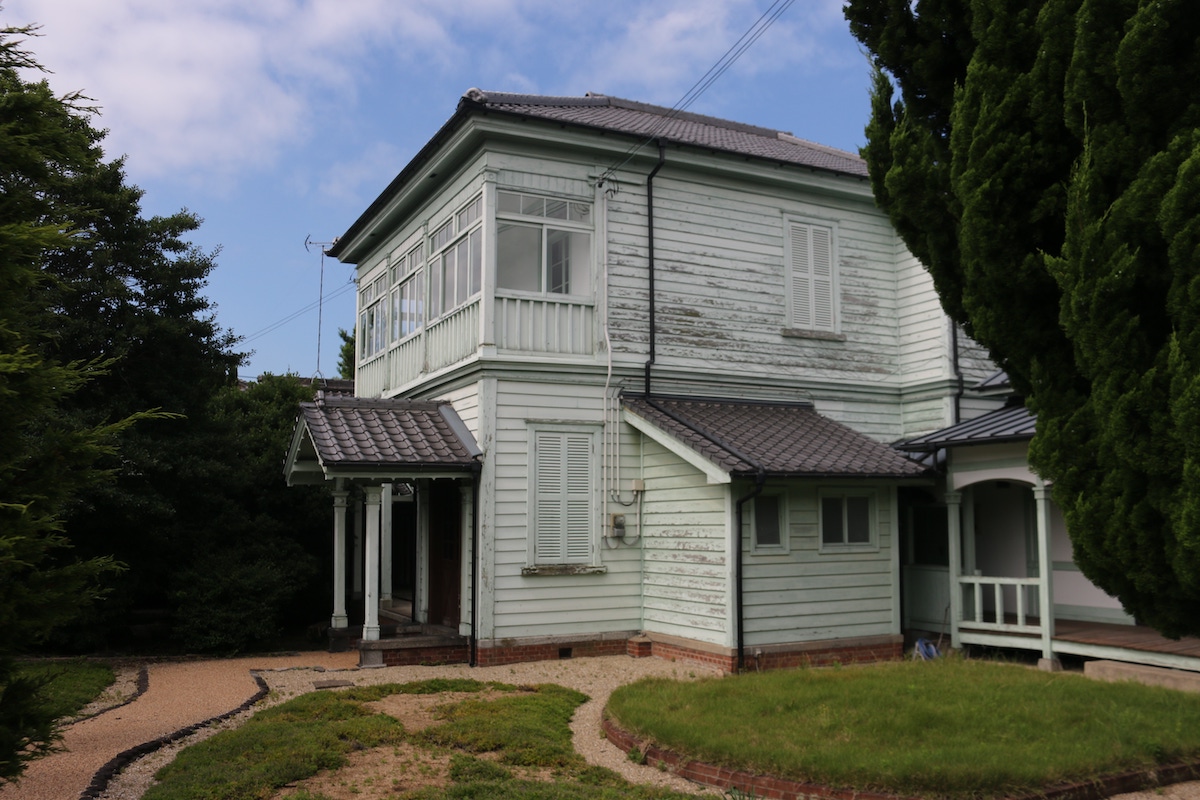
Location551 Uomachi, Takasago-cho, Takasago-shi, Hyogo, Japan Mitsubishi Paper Uomachi Club is a two-story wooden Western-style building built in 1904 in the Takasago mill of currently Mitsubishi Paper Mills, Ltd as a company housing for a foreign engineer named M J Shay. After his retirement, it was moved to Uomachi and has been used as an employee welfare facility now.
Former Takasago Fire Hall
![]() Recommended Spots
Recommended Spots
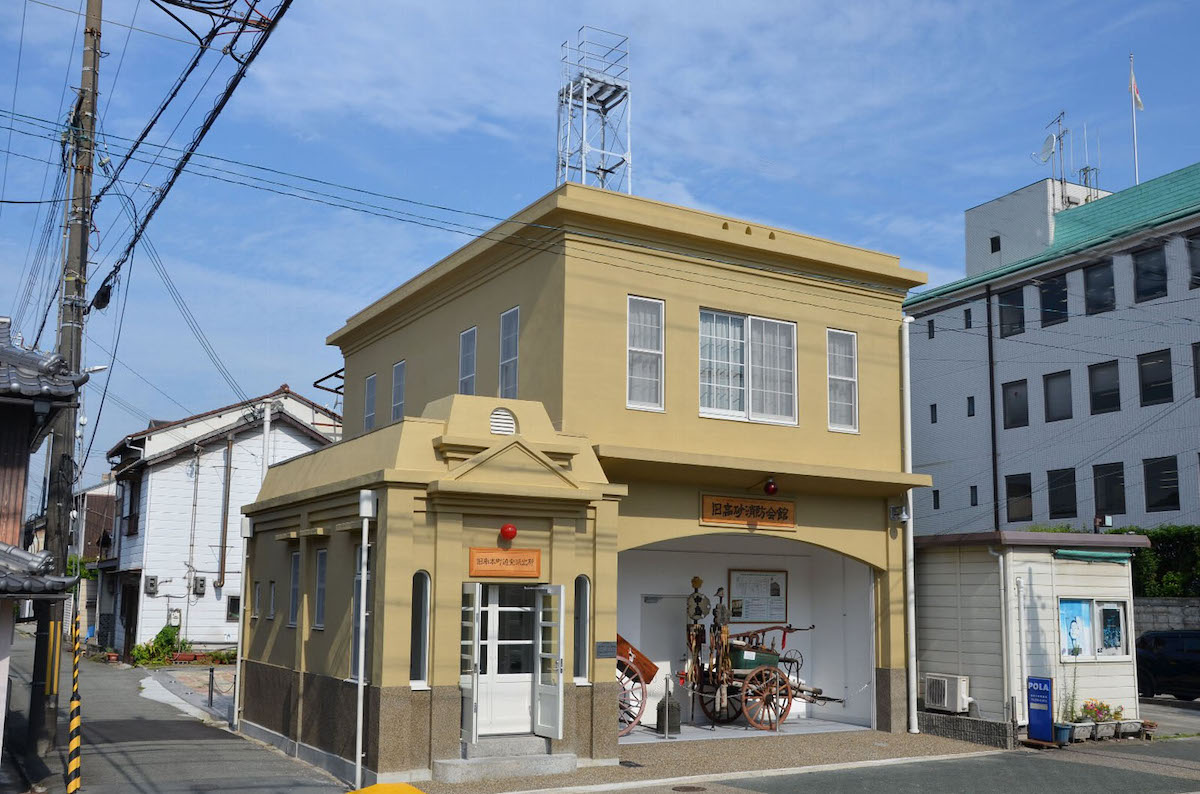
Location914 Minami-Honmachi, Takasago-cho, Takasago-shi, Hyogo, Japan Web Site Former Takasago Fire Hall is a two-story reinforced concrete building built in 1935.The first floor was used to store firefighting vehicles, and a police station was also annexed to it. The fire watchtower "Hi no Miyagura" on the roof also remains as it was then, was renovated in 2015, and is now used as a flood prevention warehouse, exhibition, etc.Registered National Tangible Cultural Property, Prefectural Structures of Landscape Formation Importance
Former Residence of Kuraku Matsuemon
![]() Recommended Spots
Recommended Spots
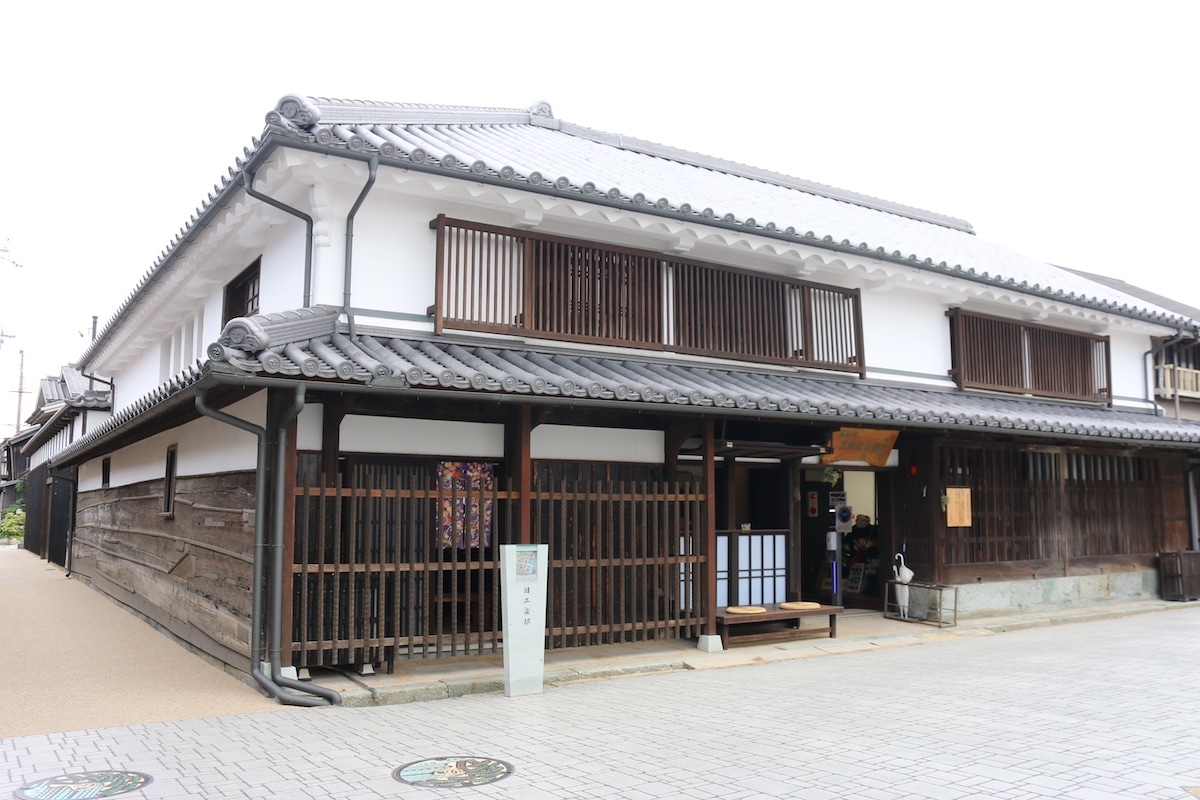
Location532 Imazu-machi, Takasago-cho, Takasago-shi, Hyogo, Japan Business Hours9:00-18:00 regular closing day:Closed: 12/29 - 1/3 Web Site It is the residence of a descendant of Kuraku Matsuemon, who was active in the invention of Hanpu (canvas) and harbor improvement during the Edo period. It has white plaster eaves, a roof with a smoke vent, a boat-plate fence, a well, and a kitchen.Prefectural Designated Historical Site
Takasago Shrine
![]() Recommended Spots
Recommended Spots
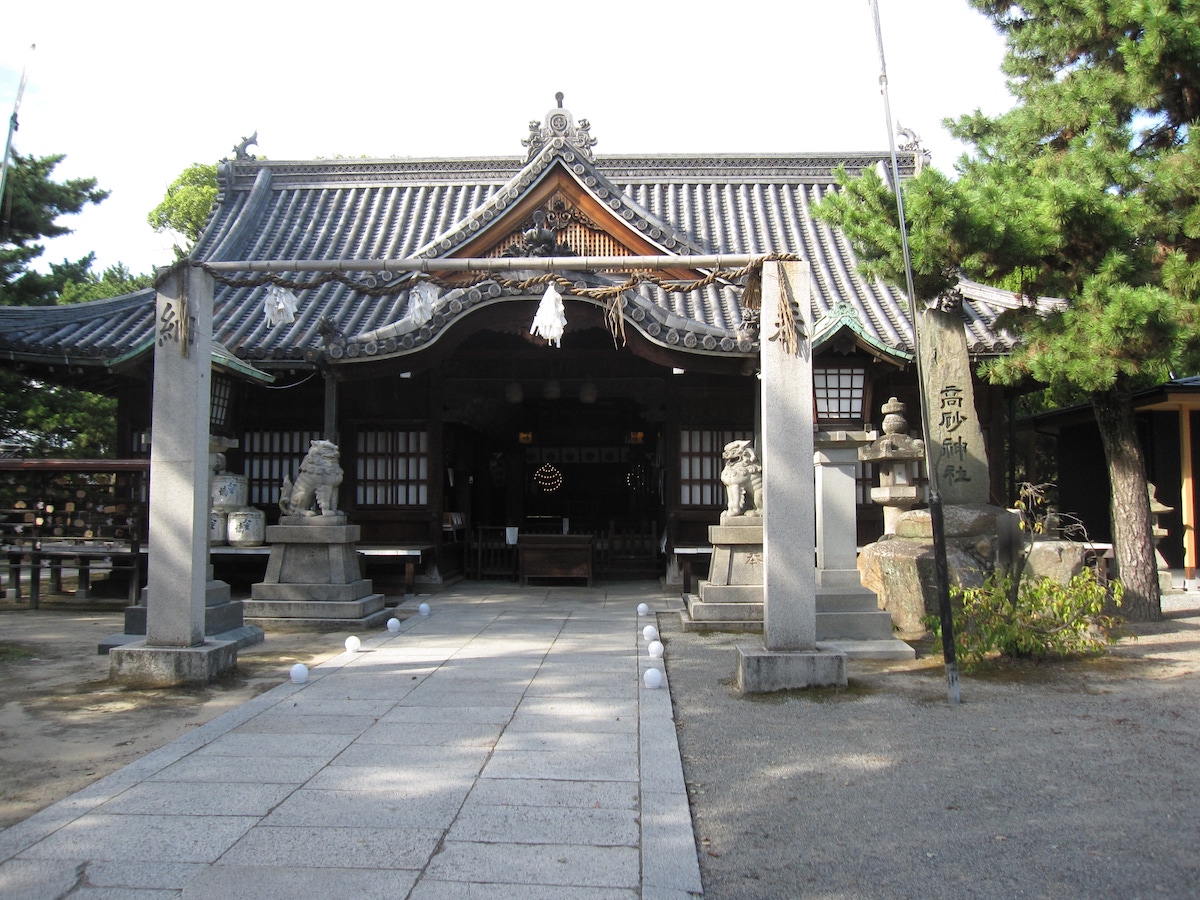
Location190 Higashi-Miyamachi, Takasago-cho, Takasago-shi, Hyogo, Japan Web Site Takasago Shrine is in the town center of Takasago city and is dedicated to the deity Ohonamuchi. It is the birthplace of "Takasago", a well-known Noh song with the lyrics "Takasago-ya...kono urabune ni ho wo agete...". In the precincts of the shrine, there are two pine trees, "Reisho and Aioi no Matsu," which is the origin of a Jou (old man) and Uba (old woman) used for an engagement gift, and an Ibuki, which is considered a sacred tree and is worshipped by many people. The main hall (Honden), the hall of congratulation (Noritoden), the hall of Shinto offerings (Heiden), and the hall of worship (Haiden) are in the center of the shrine grounds, and in the southeast from there is the Noh stage, which was reconstructed in 2013. The Jouba Festival, Gion Festival, Autumn Festival, and Kangetsu Noh performances are held here every year.
Hanai Family Residence
![]() Recommended Spots
Recommended Spots
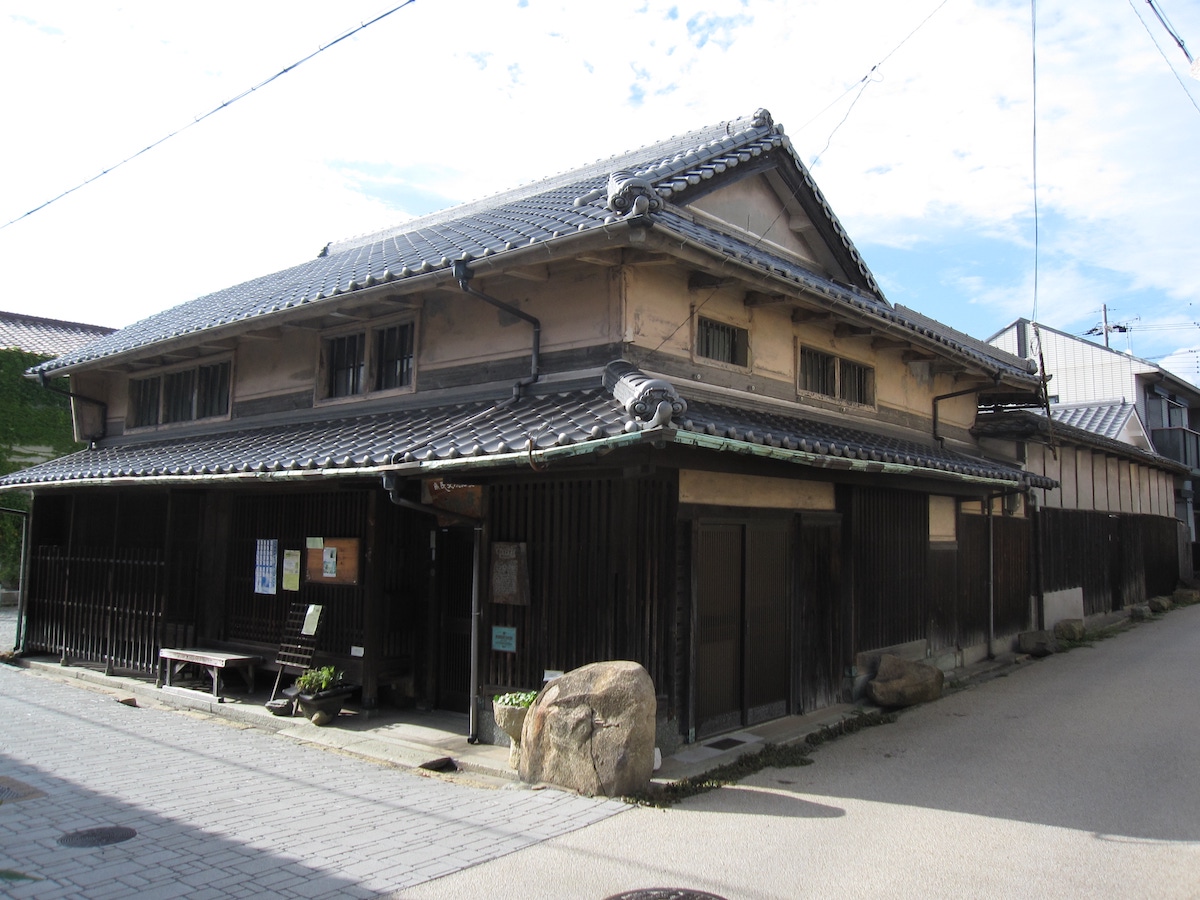
Location1511 Aza Takase-cho, Takasago-cho, Takasago-shi, Hyogo, Japan Web Site The Hanai family had run a fertilizer wholesaler until the early Showa period, taking advantage of the Kako River's shipping routes. The two-story main house was built in the late Meiji period, and the storehouse facing the Kitahori River is located here. Since 2011, it has been used as the activity base of the Takasago District Machizukuri Council.Registered National Tangible Cultural Property
 Cafe Kissa
Cafe Kissa
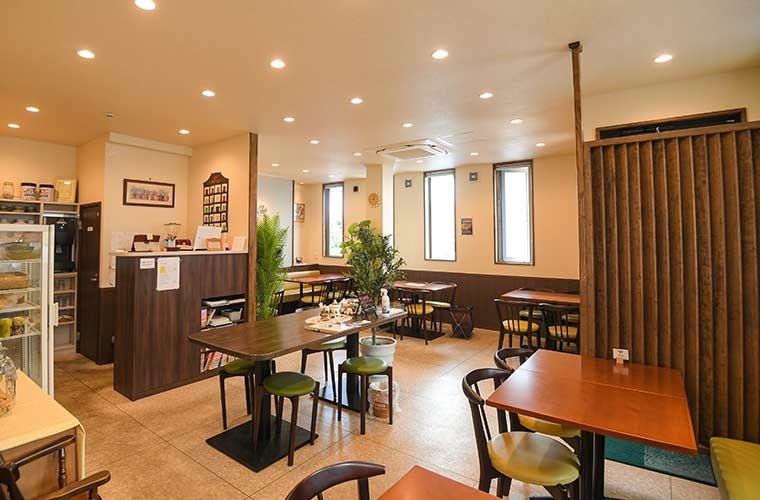
Location1796-1, Nonin-machi, Takasago-cho, Takasago-shi, Hyogo,676-0061, Japan Business Hours10:00-15:00 (14:30 L.O.) Closed|Mondays and Sundays Contact| 079-451-7366 Web Site We are proud of our hamburgers made from carefully selected beef and pork. Please fill your stomach and heart with joy with our delicious foods.
Machi no Hokenshitsu Cafe to be
![]() Cafe Kissa
Cafe Kissa
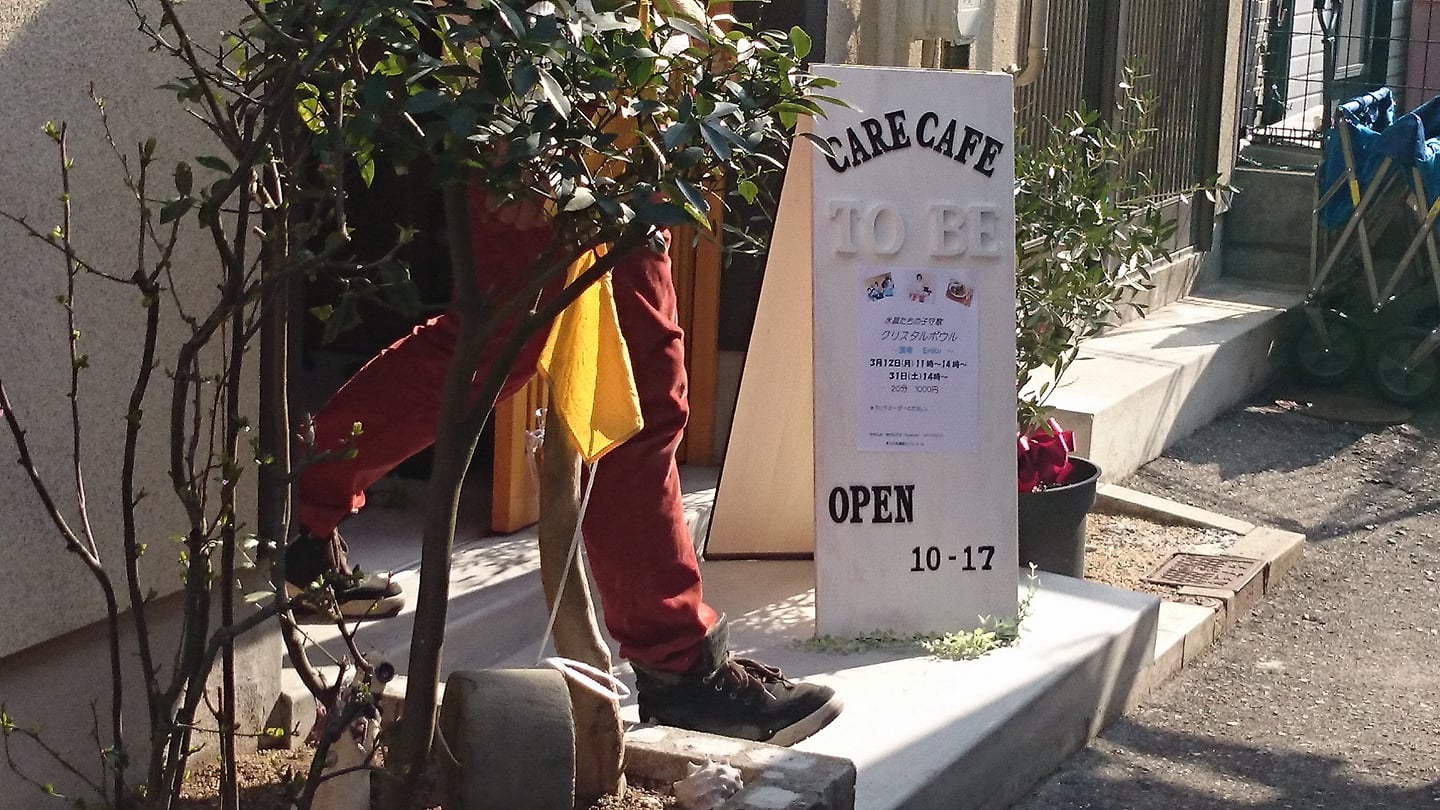
Location261, Ebisu-machi, Takasago-cho, Takasago-shi, Hyogo ,676-0045, Japan Business Hours11:00-16:00 (reservations only for the time being) Closed|Non-scheduled holidays Contact| 090-3036-0315 Web Site In addition to providing delicious and healthy meals, it also offers mental and physical care to its users as a town health center. With a wooden interior that creates a space with an earthen floor and porch, it is loved by residents as a place like a veranda in the good old days where people can casually drop in and take a breath, and where people of all occupations and titles can gather and interact. We aim to create a place where people in the community can connect and support each other, just like the porch in the good old days.
 lodging
lodging

キャプション --> Location1-10-37 Asahi-machi, Takasago-cho, Takasago-shi, Hyogo, Japan ContactTEL:079-443-6111FAX:079-443-6112 Web Site There are various scenes in a trip. Ever Hotel Takasago Ekimae, we offer services that will make you glad you chose us on any occasion. "Welcome" and "Welcome back"... As a base for access to the Takasago area and surrounding areas, our staff will welcome you with open arms, ease, and comfort.
Business Hotel Yuko
![]() lodging
lodging
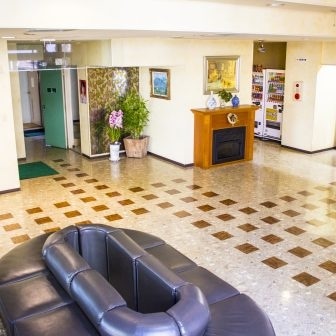
Location2-9-21, Hamada-machi, Takasago-cho, Takasago-shi, Hyogo, 676-0022, Japan ContactTEL:079-443-6711FAX:079-442-5289 Web Site Business Hotel Arihiro is a one-minute walk from Takasago Station on Sanyo Electric Railway. At the front desk, we welcome you with a smile and a sincere "welcome home" feeling. You can relax in the bright, spacious, quiet, and calm lobby.
 Japanese confectionery
Japanese confectionery
Shibatasaisyodo Honten
![]() Japanese confectionery
Japanese confectionery
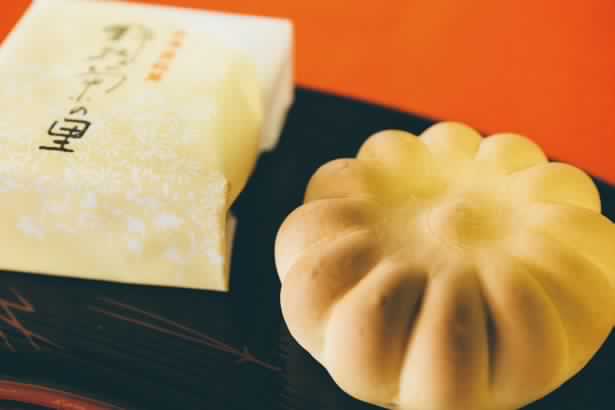
Location907-2 Minami-Honmachi, Takasago-cho, Takasago-shi, Hyogo, 676-0047, Japan Business Hours8:00-18:00 Closed|Wednesday Contact|079-442-1737 Shibata Nishiyodo Honten, established in 1893, offers a lineup of Takasago's famous confections. Many products are recommended as souvenirs and gifts for celebrations and tea ceremonies.
 souvenir
souvenir

Location 510 Imazu-machi, Takasago-cho, Takasago-shi, Hyogo,676-0041, Japan Business Hours10:00-17:00 Closed|Year-end and New Year holidays Inquiries| TEL:079-440-9031 FAX:079-440-9032 Web Site Matsuemon canvas, woven with thick threads that were used for sails in the Edo period, has a noticeably uneven surface. The processes from the yarn twisting of it to the sewing have been done in the workshop attached to the store.
 Japanese-style meal
Japanese-style meal
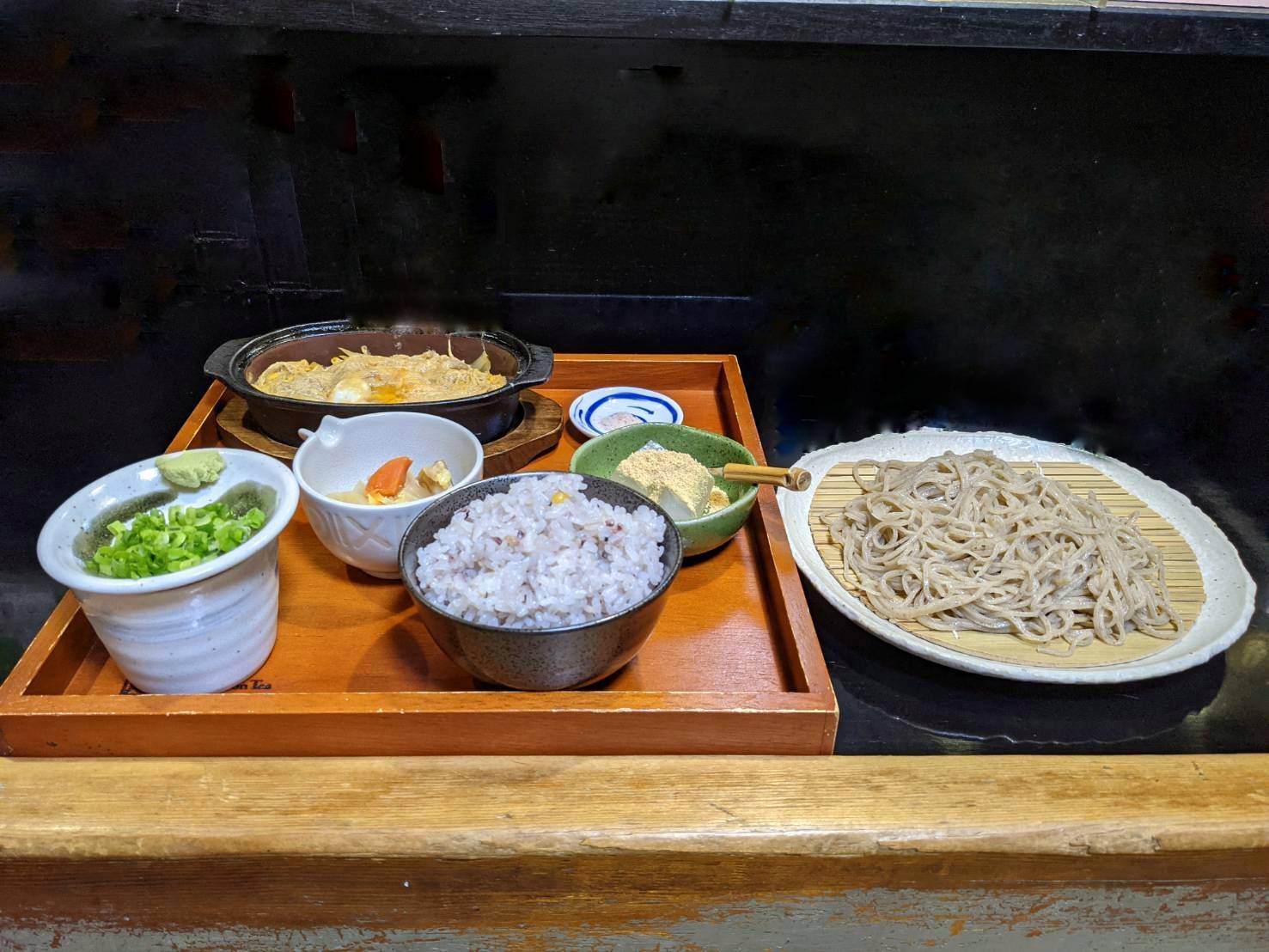
Location1178 Kita-Honmachi, Takasago-cho, Takasago-shi, Hyogo, 676-0064, Japan Business Hours[Tue-Sat] 11:30 - 14:00, 17:00 - 22:00 [Sun] 11:30 - 14:00, 17:00 - 22:00 Closed|Monday Contact|079-443-3750 The main item on the lunch menu is Soba. A la carte dishes are available at night. Reservations for various banquets (up to 20 people) are available.
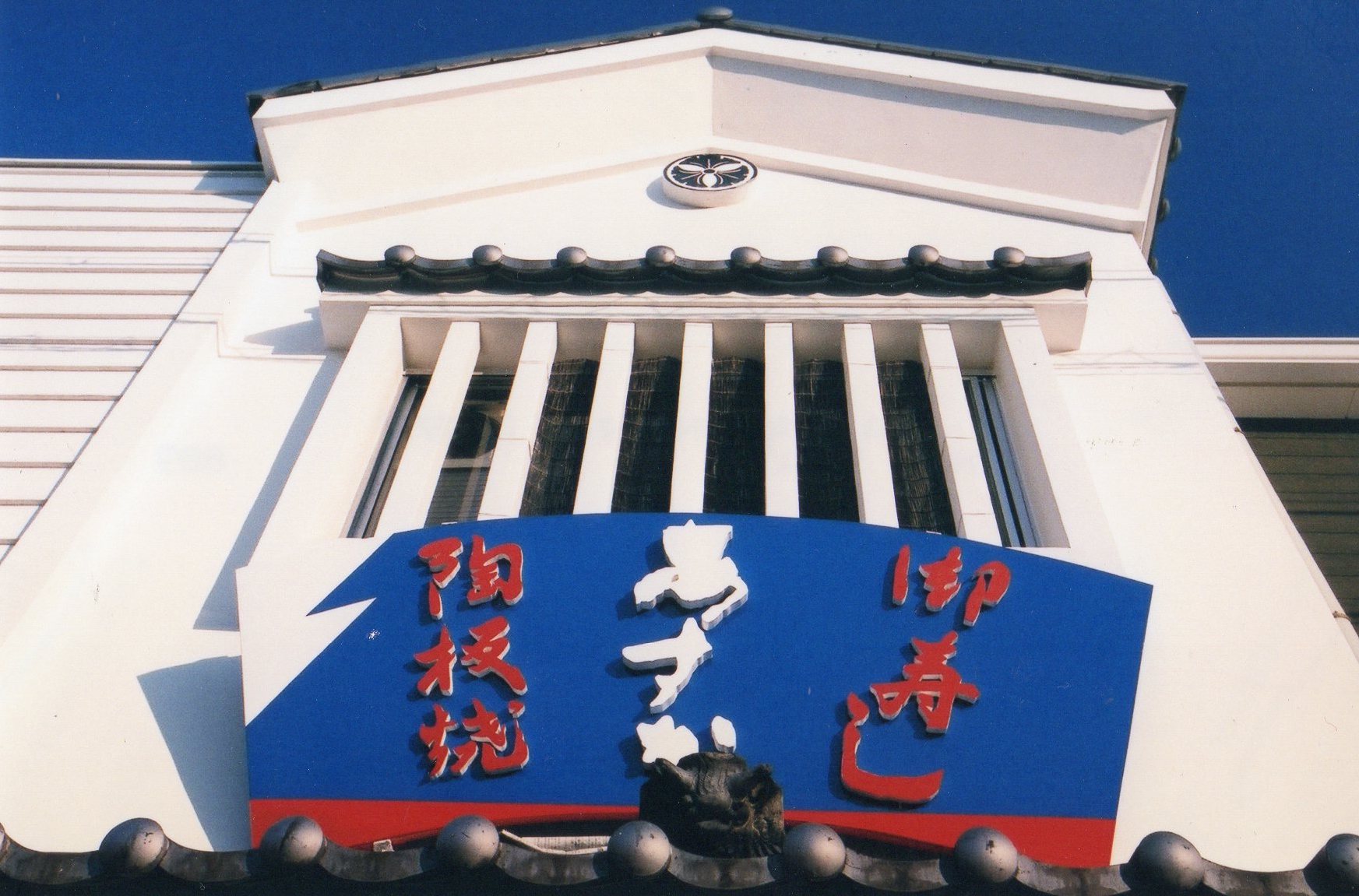
Location1610 Jirosuke-machi, Takasago-cho, Takasago-shi, Hyogo, Japan Business HoursLunch, Reservations only Evening 17:00-22:00 (LO 21:30) Closed|Non-scheduled holidays Contact|079-443-0567 ASKA serves basic local seafood and other dishes in a Showa-era retro Takasago atmosphere. Please call in advance to confirm the availability of fish, as it may not be available due to weather conditions.
 tavern
tavern

キャプション --> Location1045, Yokomachi, Takasago-cho, Takasago-shi, Hyogo, 676-0051, Japan Business Hours17:00-23:00 (L.O. 22:00) Closed|When Monday is a national holiday the next weekday will be closed. Contact|079-443-0222 Negoto is a private Izakaya (Japanese-style dining bars) hideaway in a residential area about a 10-minute walk from Takasago Station on Sanyo Electric Railway. The manager personally goes to the market to purchase the freshest seasonal ingredients and prepares cold dishes to be served cold and hot dishes to be served hot. You will have a wonderful time at our restaurant.
Haruhi Takasago
![]() tavern
tavern

キャプション --> Location373-1, Sakae-machi, Takasago-cho, Takasago-shi, Hyogo, Japan 676-0038 Business Hours17:00 - 24:00 Closed| Open daily, non-scheduled holidays Please inquire for lunch banquet. Contact|079-443-6683 The restaurant is designed in a Showa-era retro style with numerous hanging lamps, creating the warm atmosphere of the many Izakaya (Japanese-style dining bars) that existed during the Showa period.
Bucchigiri
![]() tavern
tavern

キャプション --> Location2-2-5, Hamada-macji, Takasago-cho, Takasago-shi, Hyogo, 676-0022, Japan Business Hours17:00-23:30 Closed|Sunday Bucchigiri serves authentic local chicken skewers and a variety of creative dishes using fresh fish and mountain-based vegetables. The dishes prepared by our chefs using ingredients purchased on the day are so delicious and will make you feel refreshed. There is a wide selection of Shochu and fruit wine you will be spoiled for choice. The restaurant's calm interior is made of old wood, and all seats are sunken Kotatsu, allowing you to relax and enjoy your time here.
Takasagomonogatari
![]() tavern
tavern
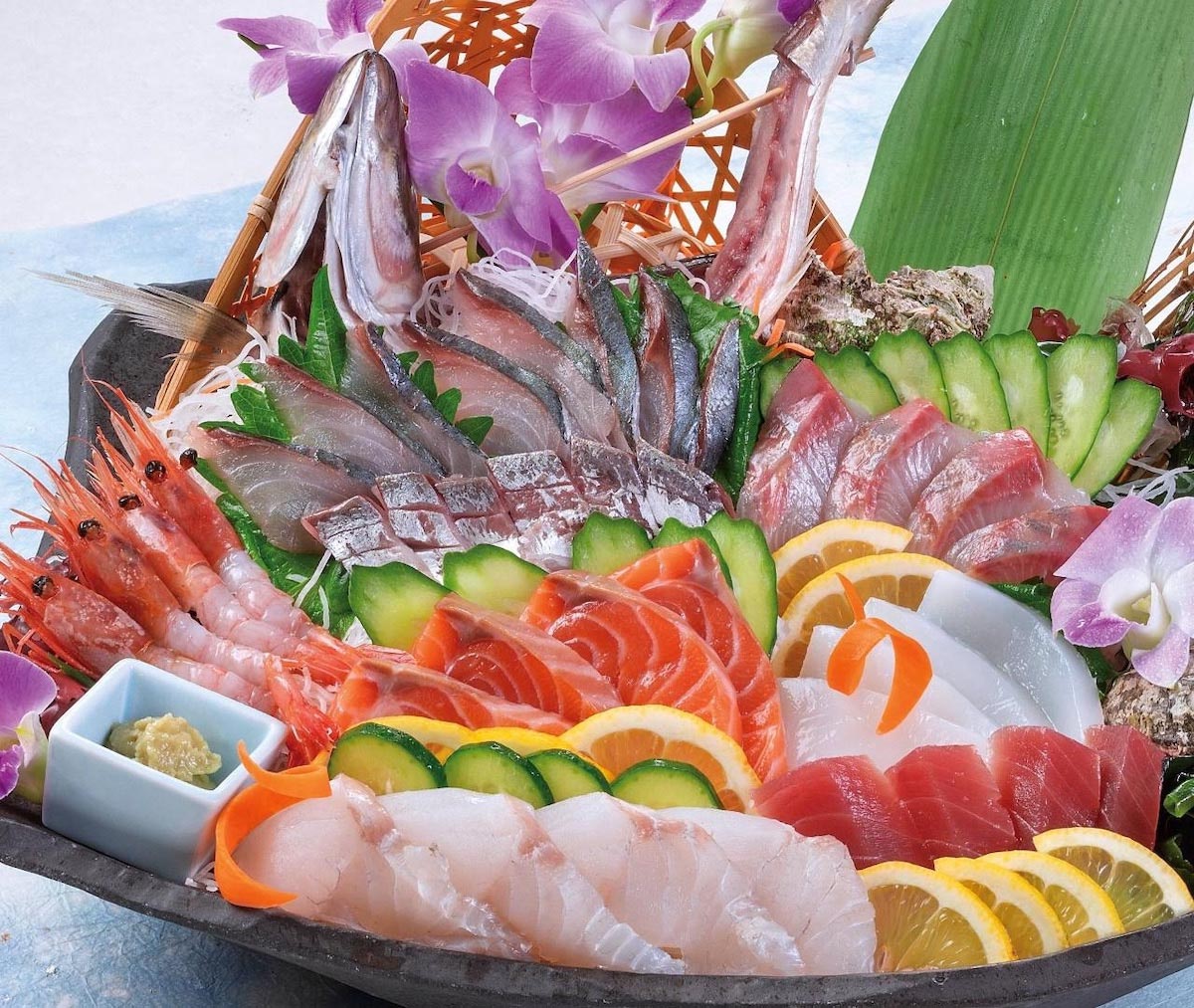
Location2-2-9, Hamada-machi, Takasago-cho, Takasago-shi, Hyogo, 676-0022, Japan Business HoursLunch: 11:00 - 14:30 (L.O. 14:00) 17:00 - 23:00 (L.O. 22:30) Closed|Sunday Contact|079-497-5542 Web Site Fresh fish is shipped directly from the local market, and the fish tank is equipped so that you can enjoy seasonal fresh and live fish dishes. We not only serve local fish from the Harimanada Sea but also fish from fishing ports all over Japan. At Takasagomonogatari, you can enjoy Sashimi, Aburiyaki (seared fish), Tempura, and other creative dishes.
 Western-style meal
Western-style meal
Mahou no Pancake Takasago Branch
![]() Western-style meal
Western-style meal

キャプション --> Location1406 Kajiya-machi, Takasago-cho, Takasago-shi, Hyogo, 676-0068, Japan Business HoursTuesday - Friday 11:00 - 15:30 (L.O.15:00) Saturday, Sunday and holidays: 11:00-17:00 (L.O.16:30) Closed on Mondays (or the following day if Monday is a national holiday) and the last Tuesday of the month Contact|079-443-3300 Web Site Mahou no Pancake Takasago Branch is designed in the image of a small cafe in Hawaii.Please take your time to enjoy delicious pancakes and meals while enjoying the laid-back atmosphere as if you were on holiday in Hawaii, forgetting your everyday life for a little while.
Oufu Curry Koyume
![]() Western-style meal
Western-style meal

キャプション --> Location2-2-2, Hamada-machi, Takasago-cho, Takasago-shi, Hyogo, 676-0022, Japan Business HoursWeekdays 11:30 - 14:30 17:30 - 21:30 Sundays and holidays 11:30-17:30 Closed on Wednesdays (open if Wednesday is a national holiday, closed the following day) and the 3rd Thursday of the month Business hours and holidays are subject to change. Contact|079-442-5373 A locally famous European curry restaurant with an amazingly good performance lunch. The expert chef prepares authentic Yotsuya Aubergine's curry.
Brasserie Pol Roger
![]() Western-style meal
Western-style meal
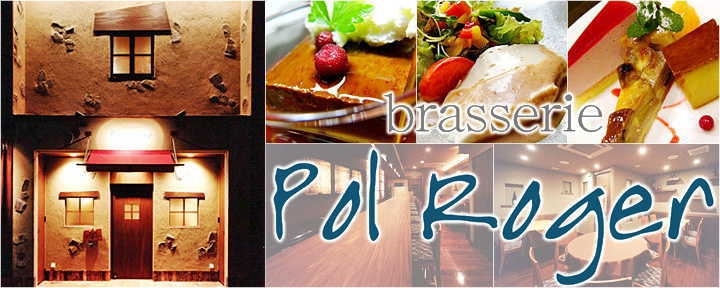
Location1379 Kajiya-machi, Takasago-cho, Takasago-shi, Hyogo, 676-0068, Japan Business HoursLunch: 11:45 - 14:00 Dinner: 17:30 - 21:00 (LO 20:00) Please make a reservation when you visit us. (Phone calls are accepted from 10:00 to 14:00 and from 17:00 to 20:00) Closed|Tuesday Contact|079-442-5128 Web Site You can enjoy dishes using Tofu made from domestic soy milk and a variety of creative dishes. A selection of delicious alcoholic beverages is also available for enjoyment both day and night.
Pub & Restaurant Sun・Harbor
![]() Western-style meal
Western-style meal
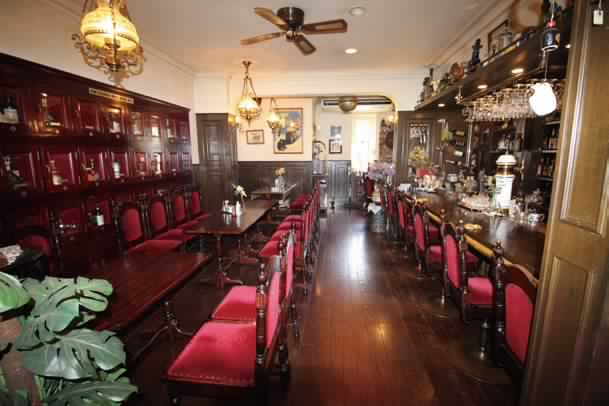
Location1358, Saiku-machi, Takasago-cho, Takasago-shi, Hyogo, Japan Business HoursLunch: 11:30 - 14:00 (L.O.13:30) [weekdays, Sat. Bar time: 19:00-00:00 (L.O.23:30) Closed|Sunday Inquiries For reservations only: 050-5870-1482 For inquiries only: 079-443-0007 Pub & Restaurant Sun・Harbor is a hidden gem in Takasago. With over 400 kinds of Western liquors, a wide variety of cocktails, and homemade snacks, you can enjoy a calm atmosphere with JAZZ as the background music. We recommend the live jazz performances held twice a month. Lunch and bento boxes are also very popular.
 yakiniku
yakiniku
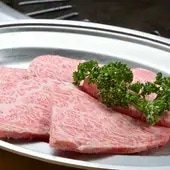
Location369-3 Sakae-machi, Takasago-cho, Takasago-shi, Hyogo, Japan Business HoursLunch: 11:30 - 14:00 Dinner: 16:30-22:00 (L.O.21:30) Closed|Monday Contact|079-442-5114 Bunka was established in Takasago in 1971 and has remained true to the original flavor of the restaurant since its establishment, making it a well-known and well-loved restaurant in the area. Bunka is popular among families and men and women of all ages for its authentic Yakiniku cuisine in a cozy, home-like atmosphere.
 Local Gourmet
Local Gourmet
Okonomiyaki Tanpopo
![]() Local Gourmet
Local Gourmet

キャプション --> Location1551 Takase-machi, Takasago-cho, Takasago-shi, Hyogo, 676-0036, Japan Business Hours[Tuesday-Saturday] 11:00-14:00 Closed|Sun, Mon, Holidays Contact|079-443-0733 Web Site

キャプション --> Location1607-3 Jirosuke-machi, Takasago-cho, Takasago-shi, Hyogo, 676-0063, Japan Business HoursLunch 12:00-14:00 Evening 18:00-21:00 Closed|Non-scheduled holidays Contact|079-455-7373
Mahou no Teppan
![]() Local Gourmet
Local Gourmet

キャプション --> Location2-2-8, Hamada-machi, Takasago-cho, Takasago-shi, Hyogo,676-0022, Japan Business Hours[Monday-Friday】11:00-15:00 17:00-21:00 (L.O.) [Saturday, Sunday, Holidays] 11:00-21:00 (L.O.) Closed on Tuesdays If Tuesday is a national holiday, the following Wednesday is a holiday. Contact|079-451-6203 Located right in front of the ticket gates of Takasago Station on the Sanyo Electric Railway, our restaurant is extremely convenient! We recommend it for a little drink after work or for a party. A whole floor reservation is also available.
Shimomura Syoten(Anago)
![]() Local Gourmet
Local Gourmet
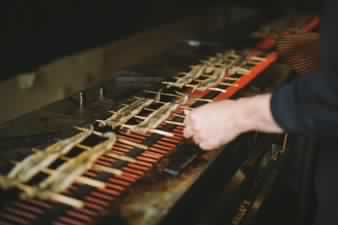
Location1172 Kita-Honmachi, Takasago-cho, Takasago-shi, Hyogo, 676-0064, Japan Business HoursWeekdays and Saturdays: 6:00 - 16:00 Holidays: 7:00 - 16:00 Closed|Sunday Contact| TEL:079-442-0124 FAX:079-442-1217 Web Site Our restaurant was opened in Takasago City in 1904 by Shimomura Tanekichi, the first generation, and has continued to specialize in Yaki Anago (grilled Anago). They are deboned with expert skill, grilled to a golden brown in soy sauce, and finished with our secret sauce.
Chasoba・Anago Soramame
![]() Local Gourmet
Local Gourmet
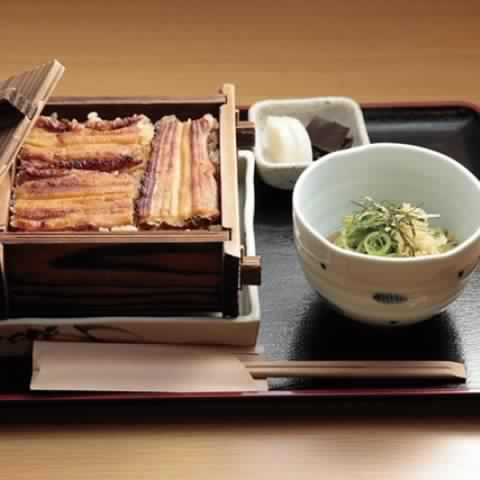
Location1416 Kajiya-machi, Takasago-cho, Takasago-shi, Hyogo, 676-0068, Japan Business HoursLunch 11:30 - L.O.13:30 (Reservation priority) Dinner by reservation only (17:00-21:30) Closed|Tuesday Contact| 079-443-1735 Web Site We offer Banshu's specialty dishes, Anago and rare Cha Soba dishes. Please spend a relaxing moment at "Soramame".
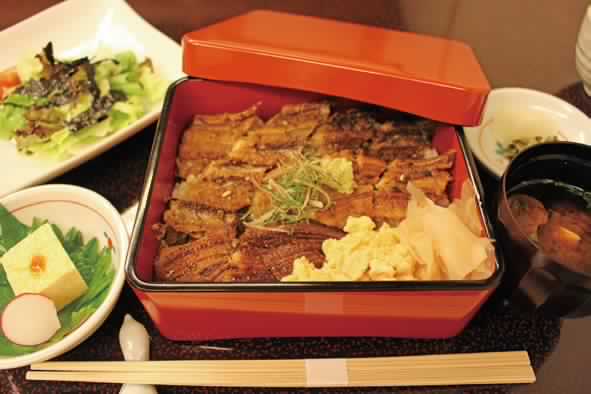
Location466 Tamachi, Takasago-cho, Takasago-shi, Hyogo, 676-0049, Japan Business Hours12:00-14:00 (LO13:30) 17:00-22:00 (LO20:30) Closed|Monday Contact|079-442-0830 Web Site In 1920, the first owner of Kakiko, Konosuke, brought an oyster boat from Ohama, Yano-cho, Aki-gun, Hiroshima Prefecture to Takasago port and established the restaurant. Please enjoy oysters from the birthplace of Dote-Nabe and carefully selected oysters from Nomi Island, Hiroshima Prefecture. Anago dishes are available from April to the end of September. Oyster dishes are available from October to the end of March.
 ramen
ramen

キャプション --> Location2-2-3 Hamada-machi, Takasago-cho, Takasago-shi, Hyogo, 676-0022, Japan Business Hours11:30-15:00 / 17:00- End as soon as sold out Closed|Sunday Contact|079-442-5101 This ramen restaurant serves flavorful slow-cooked chicken broth ramen which 100-day-old and red whole chickens are simmered and emulsified.The homemade medium-thick noodles with whole wheat flour are coated with the thick soup.
 Old private house cafe
Old private house cafe
Machiya Tentofu
![]() Old private house cafe
Old private house cafe

キャプション --> LocationWe recommend contacting the store for location. Business HoursTakibi Bunko Café" for reservation stays: 11:00-22:00 Cafe without reservation 11:00-18:00 Art Space imagine" 11:00-18:00 Closed|Non-scheduled holidays Contact|070-8982-5810 Web Site Machiya Tentofu consists of the "Takibi Bunko Cafe," a slow and relaxed stay space with meals and drinks by reservation only, and the "Art Space Imagine" (picture book sales and art exhibition), which can be used without reservations.
slow café[toco-toco]
![]() Old private house cafe
Old private house cafe
![slow café[toco-toco]](https://stroly.com/media/images/1659594157_1662021086.jpg)
キャプション --> Location477,Tamachi, Takasago-cho, Takasago-shi, Hyogo, 676-0049, Japan Business Hours8:00-18:00 Morning 8:00-11:00 Lunch 11:30-15:00 Open Sunday Closed|Monday Contact|079-490-3565 Web Site The third house on the east side of the alley before Takasago Shrine. The red roof is the landmark. It is a 15-minute walk from Takasago Station on Sanyo Electric Railway. We run our cafe in a small Machiya that is about 100 years old.All of our dishes and sweets are handmade with additive-free, natural ingredients and egg-allergy friendly. You can choose from "Irodori" rice or homemade bread.
Kissa Konnoya
![]() Old private house cafe
Old private house cafe

キャプション --> Location1106-3, Kita-Honmachi, Takasago-cho, Takasago-shi, Hyogo, 676-0064, Japan Business Hours10:00-18:00 Closed on Sunday and Monday Contact|090-7090-3082 Kissa Konnoya is a Machiya cafe where you can enjoy authentic in-house roasted coffee roasted with special attention to the beans.The nostalgic atmosphere of the store is filled with various types of desks and chairs, making it a pleasure to choose where to sit.
Ueda Coffee
![]() Old private house cafe
Old private house cafe
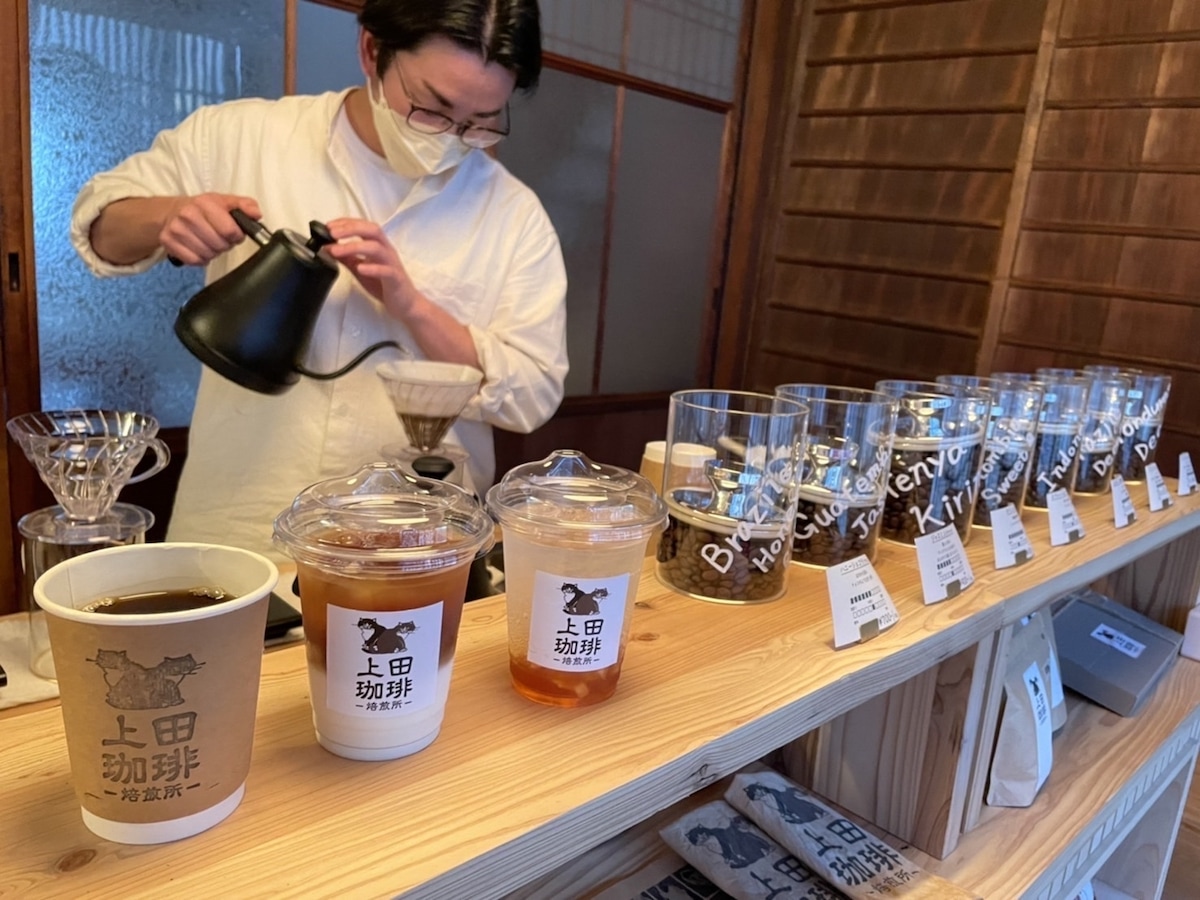
Location850, Ryoshi-machi, Takasago-cho, Takasago-shi, Hyogo, 676-0048, Japan Business HoursWednesday-Friday 10:00-17:00 Saturday and Sunday 9:00-18:00 Closed on Mondays and Tuesdays Contact|080-1525-9774 Web Site There is the earthen floor of Machiya that won an award at a renovation contest in Japan and the owner couple and their two cats provide hospitality based on the concept of "for those who work hard every day and offer you a time to relax and unwind in a nostalgic space like your grandmother's house.

Location545 Uomachi, Takasago-cho, Takasago-shi, Hyogo, 676-0053, Japan Business HoursSaturday, Sunday, Monday, Tuesday Cafe 13:30-16:30 (LO 16:00) Leather class 10:00-13:00 Closed|Wednesday, Thursday, Friday Contact|070-5654-2987 Web Site The "old private house cafe" Madousen was built more than 90 years ago. Just like the name of the restaurant, "get together in a circle and spend time together," you can relax as if you were in the living room of your own home. The fluffy chiffon cake is popular! Leather craft classes are also available!
Soup Cafe Suupu
![]() Old private house cafe
Old private house cafe
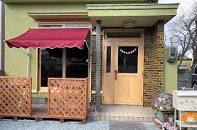
Location1335, Saiku-machi, Takasago-shi, Hyogo, 676-0065, Japan Business Hours10:00-15:00 Closed on Sunday, Monday and Tuesday Contact|080-4649-0070 Web Site Soups are prepared every day from early in the morning. We offer a wide variety of soups, such as clear soup with bonito broth, spicy Korean style, addictive taste hot and sour soup, pot-au-feu with a lot of ingredients, and minestrone with the texture of beans and vegetables! Two types of soups are available: "Soup of the Day" and "Weekly Soup.
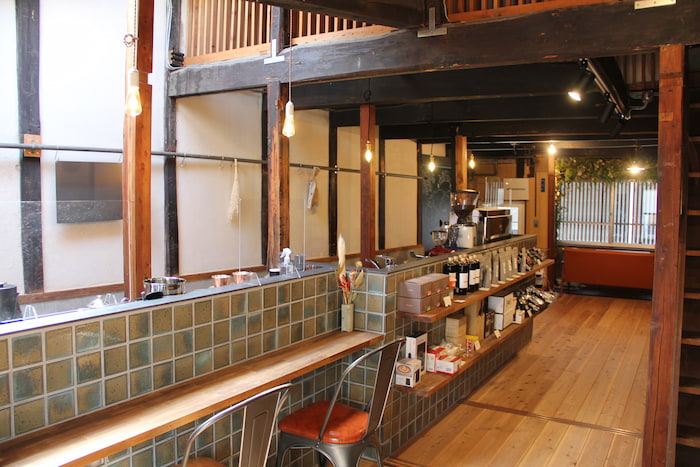
Location465-1, Tamchi, Takasago-cho, Takasago-shi, Hyogo, 676-0049, Japan Business Hours[Weekday]19:00-23:00 (L.O. 22:00) [Saturday, Sunday, Holiday]13:00-21:30 (L.O. 20:30) Closed|Non-scheduled holidays Contact|080-9126-1712 Web Site KOTI is a hideaway cafe located in a renovated 80-year-old row house in the back alley of Takasago-cho. KOTI is a coffee shop specializing in single-origin coffee. Coffee brewed with carefully selected beans is served with baked sweets and cakes.
Pochiya Cafe
![]() Old private house cafe
Old private house cafe

キャプション --> LocationKariami-machi, Takasago-cho, Takasago-shi, Hyogo, 676-0054, Japan Business Hours11:30-16:00 Closed|Monday, Tuesday, Saturday, Sunday Contact|090-6664-0500 Web Site Pochiya Cafe is an old-fashioned, nostalgic Machiya cafe that aims to create a space where everyone can feel at home, including a children's space for those with children.
Toki no Shizuku
![]() Old private house cafe
Old private house cafe
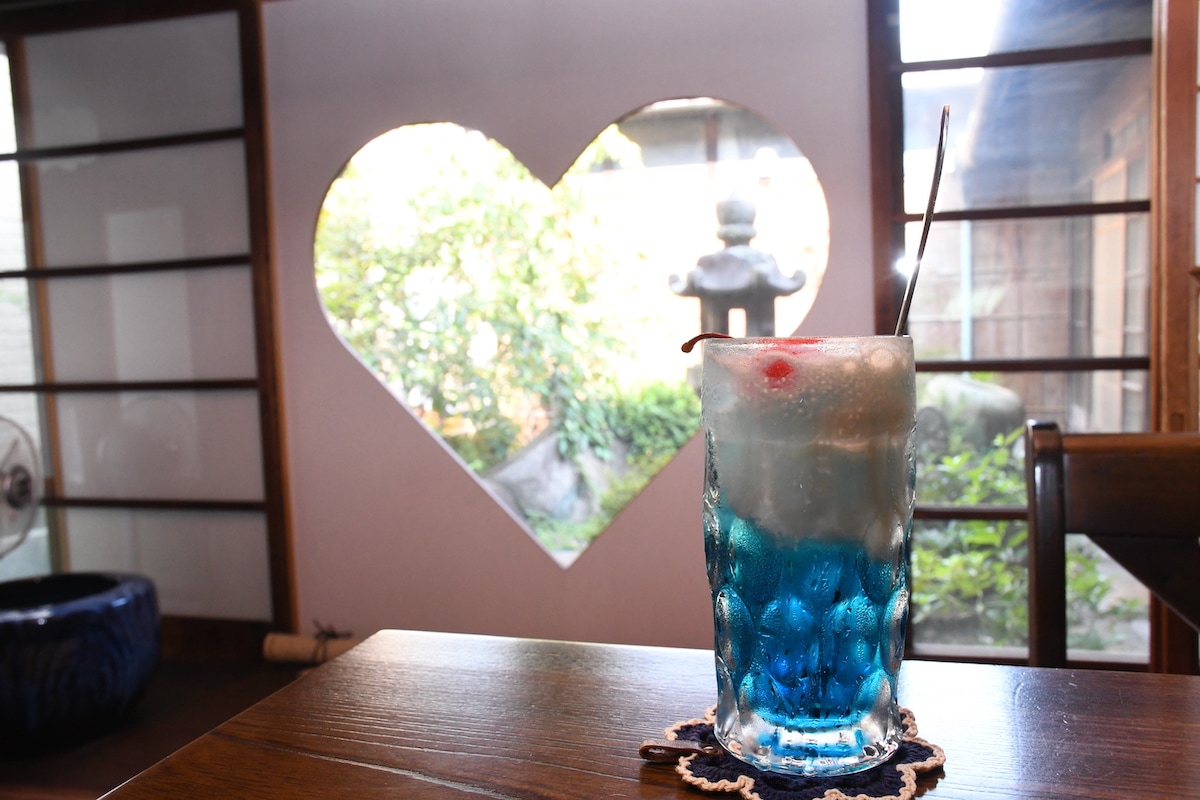
--> Location1386 Kajiya-machi, Takasago-cho, Takasago-shi, Hyogo , Japan Business Hours11:30-17:00 (winter season: October-March) 11:30-18:00 (summer season: April-September) Closed|Wednesday Contact|080-3800-0429 Web Site Toki no Shizuku is a traditional Japanese modern Machiya cafe built nearly 100 years ago. The cafe and rental space are available.
Cocage Cafe
![]() Old private house cafe
Old private house cafe
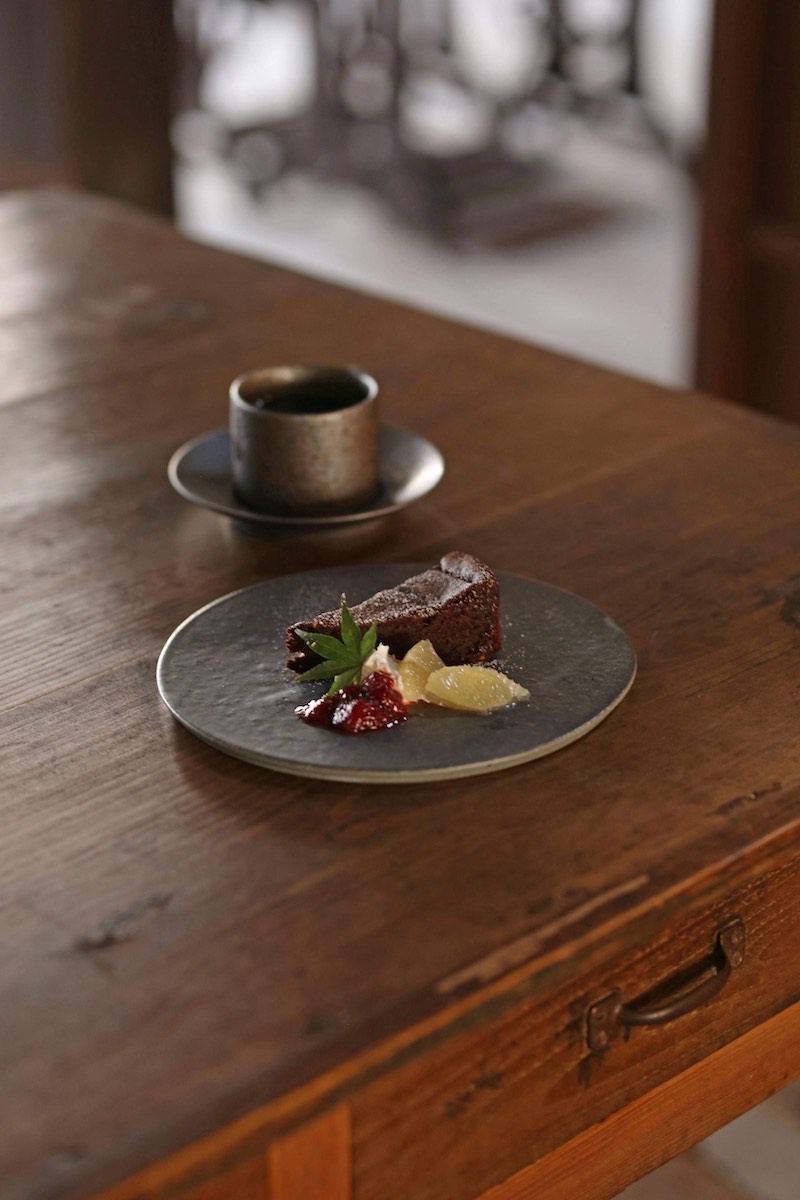
Location535-1 Imazu-machi, Takasago-cho, Takasago-shi, Hyogo, 676-0041, Japan Business Hours11:00-17:00 (order stop at 16:00) Closed|Non-scheduled holidays Contact|079-490-5311 Web Site A 100-year-old building, a merchant house selling charcoal and salt, has been renovated into a cafe. The entrance has dimmed lighting for a relaxed atmosphere, and the detached room down the hallway is bright and spacious with a garden. Upstairs is a Tatami room with the ceiling left as it was in the past.
 Western confectionery
Western confectionery

キャプション --> Location2-1-1, Hamada-machi, Takasago-cho, Takasago-shi, Hyogo, 676-0022, Japan Business Hours11:00-17:30 Closed on Mondays and the second Tuesday of the month Contact|079-442-2197 Web Site Poundwich is a stylish restaurant in the style of Machiya that offers "Pandwich," a pancake that looks cute and can be eaten with one hand like a sandwich.
 version derived from a town name
version derived from a town name
Miyamaemachi
![]() version derived from a town name
version derived from a town name

キャプション --> The name of Miyamaemachi derives from Miyamae Shinden (newly reclaimed rice field), which was opened in the late Edo period.Miyamae Shinden was opened in 1820 by Kishimoto Juemon, a cotton merchant from Oguni Village, Innami County and it has 8.7 hectare site.In 1936, most of the Miyamae Shinden, along with the adjacent Kuraku Shinden, became the site of Kanegafuchi Cotton Spinning Company's rayon factory (currently the Takasago branch of Kaneka Cooperation).The name of the area was established in 1952.
Nouninmachi
![]() version derived from a town name
version derived from a town name

キャプション --> Nouninmachi is a townscape running east-west from Higashi-Nouninmachi to the west along the north bank of the Kitahori River at the northwestern edge of the town.The name of Nouninmachi derives from the fact that many farmers and salt farmers used to live there.Okada Momodayu, Ojoya Namikaku in charge of supervising the rural areas around Takasago, lived there.There was a former Takasago, which was called Komiyachi means the old shrine place.In 1841, there were 103 households with a total of 480 residents.
Higashinouninmachi
![]() version derived from a town name
version derived from a town name

キャプション --> Higashinouninmachi is a townscape along the north bank of the Kitahori River at the northern end of the town, stretching from Kitahonmachi to Nouninmachi to the west.The name of Higashinouninmachi derives from the fact that many farmers and salt farmers used to live in this area, just like in the neighboring Nouninmachi to the west.It was established in the middle of the Edo period when it was separated from Nuoninmachi.Machidoshiyori(elder chief of a village or town during Edo Period) was Shioya (salt store) Tobei.In 1841, there were 34 households with a total of 130 residents.
Daikumachi
![]() version derived from a town name
version derived from a town name

キャプション --> Daikumachi is a townscape running north-south from Teramachi, which used to be located along the Nishibori River, to the south.The name of Daikumachi derives from the fact that carpenters who built fishing boats and ferry boats used to gather in the area.In addition to Daikuya (carpenter) Zenbei of Machidoshiyori(elder chief of a village or town during Edo Period), 3 leaders lived there, and there were 21 houses of carpenters.In 1838, there were 39 households and a total of 173 residents.

キャプション --> Kagimachi is located west of the former Teramachi and is a townscape running north to south.The name of Kagimachi derives from the autumn festival of Takasago Shrine, during which the ritual of opening the lock is performed.Many Kamaya (pottery stores) were located there, and in the old days, people engaged in the salt beach industry gathered in the town.In 1842, there were 47 households with a total of 180 residents.
Jirosukemachi
![]() version derived from a town name
version derived from a town name

キャプション --> Jirosukemachi is a townscape along the south bank of the Kitahori River, stretching east to west from Kitahonmachi to the Nishibori River to the west.It used to be a prosperous flower town with many red-light districts and teahouses.At the end of the Edo period, there was Nakasu Juemon's Japanese school, Kyododo.In 1839, there were 49 households with a total of 168 residents.
Kajiyamachi
![]() version derived from a town name
version derived from a town name

キャプション --> Kajiyamachi is an east-west townscape along a third street north from the Minamihori River, from Kitahonmachi to the Nishibori River to the west.The name of Kajiyamachi derives from the fact that farm tools used in the farmland that opened up in the northwestern part of Takasago and nails used by ship carpenters were made.In addition to Sashimonoya Chobei of Machidoshiyori (elder chief of a village or town during Edo Period), Konya(dyer) Shobei who invented Takasago-Zome lived there.There was a storehouse for storing necessary supplies for Takasago-cho.In 1843, there were 50 households with a total of 189 residents.
Saikumachi
![]() version derived from a town name
version derived from a town name

キャプション --> Saikumachi is an east-west townscape from Kitahonmachi along the second street north of the Minamihori River to the Nishibori River to the west.The name of Saikumachi derives from the fact that craftsmen used to gather in the area.There was a Machikaisho (town meeting place) where 2 or 3 Odoshiyori (elder chief of a village or town during Edo Period) and Tsukibanmachi-Doshiyori (monthly elder chief of a village or town during Edo Period) were in charge of town administration of Takasago-cho.In 1846, there were 45 households with a total of 178 residents.
Kitatokaimachi
![]() version derived from a town name
version derived from a town name

キャプション --> Kitatokaimachi is a townscape running north-south from Yokomachi to Jirosukemachi to the north.Like Minamitokaimachi, the name of Kitatokaimachi derives from the fact that many boat owners and sailors used to gather there.It was Tokaimachi when Takasago-cho was established, but by the mid-Edo period, it is thought to have been divided into two separate towns, Kitatokaimachi and Minamitokaimachi.In 1836, there were 45 households with a total of 140 residents.

キャプション --> There were Komamonomachi and Teramachi when Takasago-cho was established, but Komamonomachi was renamed Yokomachi by the mid-Edo period, and Teramachi was incorporated in the early Meiji period.The name of Yokomachi derives from the fact that it was a street that ran horizontally (east-west).In the former Teramachi, there were Jurin Temple and its pagoda.In Jurin Temple, there are the graves of Kajiwara, the lord of the medieval Takasago Castle, Kuraku Shoou, Sugano Hakka, and others associated with Takasago and the grave of Tenjiku Tokubei in Zenryuji Temple.In 1838, there are 52 households with a total of 205 residents.

キャプション --> Uomachi is an east-west townscape stretching from Imazumachi to the Nishibori River to the west.The name of Uomachi derives from the fish market and fish wholesalers who sold and bought fish and seafood from the Seto Inland Sea.When Takasago cho was established, there were Uodanamachi and Nishiuomachi, but they were probably merged by the middle of the Edo period.Kasuya Choubei of Odoshiyori(elder chief of a village or town during Edo Period) lived there.In 1838, there were 69 households with a total of 28 residents.
Minamitokaimachi
![]() version derived from a town name
version derived from a town name

キャプション --> Minamitokaimachi is a townscape from Yokomachi to the south along the former coast.The name of Minamitokaimachi derives from the fact that boatmen and sailors of berry boats used to gather there.When Takasago-cho was established, it was Tokaimachi but was separated into Minamitokaimachi and Kitatokaimachi by the middle of the Edo period.Takasago prospered as a port town during the Edo period, and it can be seen that many large ferry boats loaded with goods came and went to distant areas as well as the Seto Inland Sea.In 1836, there were 59 households with a total of 227 residents.
Tsurifunemachi
![]() version derived from a town name
version derived from a town name

キャプション --> Tsurifunemachi is located to the west of Minamihonmachi and a townscape used to be along the sea coast of the Nishibori River.The name of Tsurifunemachi derives from the fact that many Funamochi fishermen used to gather in this area. Therefore, many people with store names related to the fishing industry, such as Amiya, Tsuriya, and Kariami, lived there.In 1837, there are 79 households with a total of 325 residents.
Kariamimachi
![]() version derived from a town name
version derived from a town name

キャプション --> Kariamimachi was located at the southern end of the town and a townscape used to be along the sea coast, running from Minamihonmachi to the east, Minamitokaimachi to the west.The name of Kariamimachi derives from the fact that fishermen used to gather and live in the area. Together with Tsurifunemachi and Ryoshimachi, it was a thriving fishing industry.In 1838, there were 52 households with a total of 182 people.
Ebisumachi
![]() version derived from a town name
version derived from a town name

キャプション --> Ebisumachi is located at the southern end of the town where fishermen used to gather along the sea.The name of Ebisumachi derives from the fact that fishermen, including Ami Jinpei, built Ebisu Shrine by inviting Nishinomiya Shrine in Settsu, and made it the guardian deity of fishery.Many houses had the store name of Tsuriya (fishing store).In 1839, there were 150 households with a total of 608 residents.
Minamihamamachi
![]() version derived from a town name
version derived from a town name

キャプション --> Minamihamamachi is located in the southeastern part of the town, at the mouth of the Takasago River, which is now the Hori River, and a townscape extends from Imadumachi to the south.The name of the town derives from the fact that it used to be a beach to the south of the town.There was a landing place and warehouses of wholesale dealers lined the streets.Shibaya Shichidayu and Shioya Jiemon were the Odoshiyori(elder chief of a village or town during Edo Period) and also Okuramoto(Wholesale merchants whose business was to accept, store, and offload goods) of Takasago-cho around the end of the Edo period.It is also the birthplace of the Confucian scholar Miura Usai.There were several Edo period government offices such as Kawaguchi Bansho, Shioza Kaisho, Kawagata Kaisho, and Urakosatsuba. In 1773, there were 34 households with a total of 155 residents.
Higashimiyamachi
![]() version derived from a town name
version derived from a town name

キャプション --> Higashimiyamachi is a townscape extending south from Takasago Shrine.The name of Higashimiyamachi derives from its location to the east of Takasago Shrine.Among the residents of this area, there was Kuraku Matsuemon, who is known for his work on the improvement of Hanpu(canvas) and the construction of the Etorofu port.The Takasago Shrine and the East Ebisu Sya(Shrine) are located in this area.In addition, the Kaihoji Temple of the Shingon sect (Kairou Elementary School, the predecessor of the later Takasago Elementary School) was located in the present Higashimiyamachi Ryokuchi Park.In 1838, there were 65 households with a total of 281 residents.
Nishimiyamachi
![]() version derived from a town name
version derived from a town name

キャプション --> Nishimiyamachi is a townscape along a north-south street from Tamachi in the north to Ebisumachi in the south.The name of Nishimiyamachi derives from its location to the west of Takasago Shrine.In the old days, there were pine forests and scattered houses.In 1773, there were 63 households with a total of 239 residents.
Ryoshimachi
![]() version derived from a town name
version derived from a town name

キャプション --> Ryoshimachi is a townscape stretching east to west from Nishimiyamachi in the east to Minamihonmachi in the west.The name of Ryoshimachi derives from the fact that hunters (fishermen) used to gather in the area. In the past, the area around Takasago was called Mikuriyanosho, and fish and shellfish were delivered to the Imperial Court as offerings.This indicates that the coastal area of Takasago was a fishing village from ancient times.In 1838, there were 41 households with a total of 146 residents.

キャプション --> Tamachi is a townscape along the second street south of the Minamihori River.The name derives from the fact that farmers from Yota, Ikeda, and Nagata villages on the opposite bank of the Kako River were ordered to relocate to this area to develop the sandy beach and Takasu to form a town.In 1838, there were 63 households with a total of e 240 residents.
Imazumachi
![]() version derived from a town name
version derived from a town name

キャプション --> Imazumachi is a townscape running east to west along the Minamihori River.The name of Imazumachi derives from the fact that Honda Tadamasa, the lord of the Himeji Domain ordered Kato Hayato and others to develop the town, and many people moved from Imazumachi on the opposite bank of the Kako River in the Genna period.It was a busy area with wholesaler's warehouses and a landing place facing the Minamihori River.Kinoshitaya Rihei and the other three Okuramoto(Wholesale merchants whose business was to accept, store, and offload goods) lived there.A Confucian scholar, Sugano Shinsai, and his son Hakka, a professor of Shingido of the Himeji Domain School were from this area.In 1841, there were 13 households with a total of 46 residents.
Higashihamamachi
![]() version derived from a town name
version derived from a town name

キャプション --> Higashihamamachi is a townscape stretching north-south from Takasemachi in the north to Zaimokumachi in the south.The name of the Higashihamamachi derives from its location along the Takasago River, which is now the Hori River, at the eastern end of the town.There was a landing place and warehouses of wholesale dealers lined the streets.Tsuboya Chozaemon, Komamonoya Gihei, and Komeya Seibei were Okuramoto(Wholesale merchants whose business was to accept, store, and offload goods) and Shiozayaku(In chargIn charge of an organization by salt merchants who dealt in salt and salt mixture (salted fish and salted dried fish).).In 1838, there were 13 households with a total of 54 residents.
Zaimokumachi
![]() version derived from a town name
version derived from a town name

キャプション --> Zaimokumachi is a townscape running east to west along the north bank of the Minamihori River.The name of Zaimokumachi derives from the fact that it was a collection point for lumber brought in from the upper reaches of the Kako River.There were four Okuramoto(Wholesale merchants whose business was to accept, store, and offload goods), including Matsuura Chobei of Goyotashi Otoshiyori(Privileged merchants who were allowed to enter and leave the Shogunate and clans during the Edo period to deliver supplies and procure gold and silver.) and Mataemon Komeya Mataemon.The Confucian scholar Miura Shoseki, who was also a professor at Shingido, Minobe Shuho, father of the constitutional scholar Minobe Tatsukichi, and the haiku poet Tanaka Fusyu were also from this area.In 1842, there were 13 households with a total of 52 residents.
Sendoumachi
![]() version derived from a town name
version derived from a town name

キャプション --> Sendomachi is a townscape along the third street from south of the Kitahori River, stretching east to west from Higashihamamachi in the east to Kitahonmachi in the west.The name of Sendoumachi derives from the fact that boatmen used to gather in this area.It is the birthplace of Tenjiku Tokubei, who traveled to distant Southeast Asia on a red seal ship in the early Edo period.Also, Shinya Kahei established Kanazawa Shinden (a newly reclaimed rice field) on the beach in Shinobemura.For this achievement, he was given the family name Kanazawa and became a Machiodoshiyorikaku(elder chief of a village or town during Edo Period).In 1843, there were 58 households with a total of 231 residents.
Shimizumachi
![]() version derived from a town name
version derived from a town name

キャプション --> Shimizumachi is a townscape stretching from east to west along the second street south of the Kitahori River, from Higashihamamachi in the east to Kitahonmachi in the west.The name of Shimizumachi derives from the freshwater (well) at the corner of Kitahonmachi.Since Takasago was close to the beach and there were few wells with fresh water gushes, it was valuable as drinking water for the townspeople.There is also a theory that it is the name of the place of origin of the immigrants who moved to Takasago when the town was established.Yasuda Chobei,Machidoshiyori(elder chief of a village or town during Edo Period) was Okuramoto(Wholesale merchants whose business was to accept, store, and offload goods).In 1838, there were 84 households with a total of 370 residents.
Takasemachi
![]() version derived from a town name
version derived from a town name

キャプション --> Takasemachii is a townscape along the south bank of the Kitahori River from east to west.The name of Takasemachi derives from the Takasebune boatyard which was used to transport tribute rice and other commodities from the Kako River basin downstream and dried sardines and daily necessities brought from Kamigata to Takasago Minato (port) to the upper reaches of the river. Although the Kitahori River has now been reclaimed, the Inari Bridge that once spanned the river still retains vestiges of those days.In 1838, there were 44 households with a total of 200 residents.

キャプション --> Aiyamachi is a townscape running east to west along the north bank of the Kitahori River.The name of the town derives from the fact that dyers used to gather in the area. Machiodoshiyori(elder chief oelder chief of a village or town during Edo Period), Sumiya Kyuzaemon, was a Okuramoto(Wholesale merchants whose business was to accept, store, and offload goods).To the east of the district, there were two warehouses of rice stored by the Himeji Domain called Hyakkengura in the north and south, and the Tsudome Kokudome Bansyo(guard house) was set up to inspect the Takasebune, which transported goods from the upper reaches of the Kako River.In 1837, there were 83 households with a total of 390 residents.
Minamihonmachi
![]() version derived from a town name
version derived from a town name

キャプション --> Minamihonmachi is a townscape along the main road that runs through the center of Takasago-cho from north to south.Kako Yoshibei of Goyotashi Odoshiyori(Privileged merchants who were allowed to enter and leave the Shogunate and clans during the Edo period to deliver supplies and procure gold and silver.), and Bingoya Jubei of Machidoshiyori (elder chief oelder chief of a village or town during Edo Period), were Okuramoto(Wholesale merchants whose business was to accept, store, and offload goods).It was the birthplace of Kobayashi Goyo, a Confucian scholar and professor at Shingido School.Koneisou (emergency food storage warehouse) used to be located in this area.Today, there is a temple, Gessai-an, which is said to have been founded by Gessai Shonin.In 1844, there are 62 households with a total of 274 residents.
Kitahonmachi
![]() version derived from a town name
version derived from a town name

キャプション --> Kitahonmachi is a townscape along the main street that runs north-south through the center of Takasago-cho.Goyotashi Odoshiyori(Privileged merchants who were allowed to enter and leave the Shogunate and clans during the Edo period to deliver supplies and procure gold and silver.) Kishimoto Kichibei lived in this area. The Kishimoto family was a wealthy merchant who had been in the cotton business for generations and was main and was appointed as a Kokusangata(Officials handling the territory's specialties in the Edo period)and loan advisor.During the Bunka era, Shingido School was built at the suggestion of Suno Kawai, Karo(chief retainer) of the Himeji Domain, and the land and buildings were provided by the Kishimoto family.In 1839, there were 82 households with a total of 358 residents.
 Tourist Information Center / Souvenirs
Tourist Information Center / Souvenirs
Tourist Center "Musubin"
![]() Tourist Information Center / Souvenirs
Tourist Information Center / Souvenirs
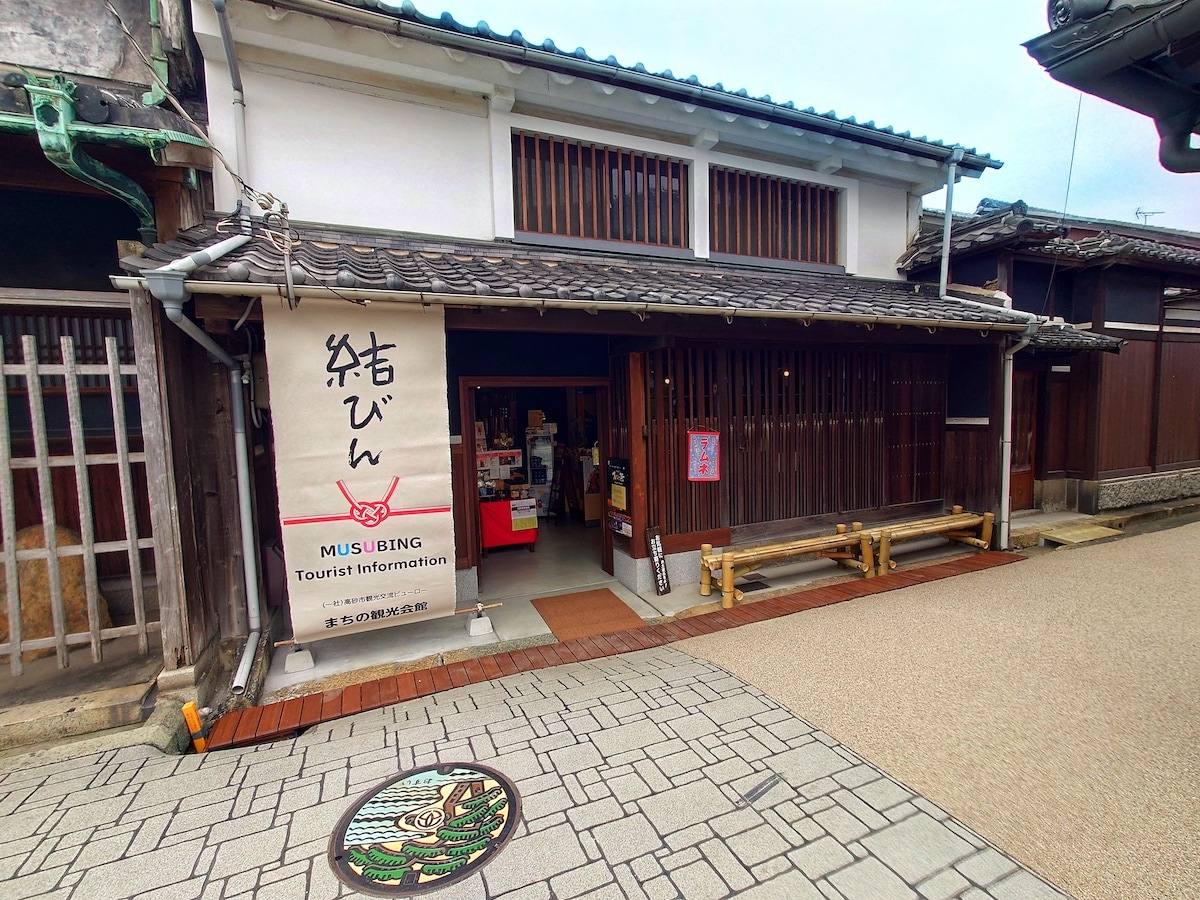
Location533-1 Imazu-machi, Takasago-cho, Takasago-shi, Hyogo, 676-0041, Japan Business Hours10:00-17:00 Closed|Open all year round (except for year-end and New Year holidays) Contact|079-441-8076 Web Site The town's tourist center "Musubin" has been renewed.The name "Musubin" was written by Mr. Yudai Fujita, a calligrapher from Takasago City, on a newly colored tapestry made of matsuemonho (a traditional Japanese sail).In addition, the newly introduced bamboo bench by Bamboo Fam. is very comfortable and perfect for taking a break while walking around town.New products are arriving one after another, so please take a peek inside the store.We look forward to welcoming you to the renewed Knots, whether for a break or for shopping.Of course, in addition to Takasago souvenirs, we also provide tourist information.
 treatment
treatment

Welcome to "Time Slip Takasago Sanpo-Map" Takasago, a port town that has existed since the Edo period, still retains the scenery of those days. Please walk around the streets and visit historic sites feeling like you are traveling into Edo and Meiji periods, using the Stroly digital map and following the street name signs. Please enjoy Takasago Nostalgia by using the GPS of your smartphone or tablet to walk through the streets of Edo and Meiji Periods. Icons in Map Spot Information Information on each spot is introduced here. Information Button You can see the title and description of the map. Communication Button When you set up a room, you can share your current location and walking route on the map with a limited number of people, such as friends and family members, and also use the chat function. SPOT LIST Button You can check the list of spots.You can change the display/non-display of each category. GPS Button Turn GPS on and off. Click on「(When white)」 →Start sharing your current location Click on「 (When blue)」 →Display centered on the current location Can be switched with Google Maps. Orientation Reset Button On touch panel devices, you can change the orientation of the map by rotating the screen with two fingers. If you want to revert to the original orientation, please press this button. Notes. ※When operating a smartphone, please check the safety of your surroundings and stand still before operating it. It is extremely dangerous to move around while looking at your smartphone. ※Please allow "Use of Location Information" on your smartphone browser. ※If your current location is not displayed even though you are within the map area, it is possible that the GPS signal is not being acquired properly. Please move a little and try again. ※Due to the effects of the new coronavirus infection, facility openings and store hours are subject to change. Please check in advance before your visit. ※Illustrations and photographs are for illustrative purposes only. The information provided is current as of November 2022.
 Horikawa Canal Squadron
Horikawa Canal Squadron
Horikawa Canal Squadron
![]() Horikawa Canal Squadron
Horikawa Canal Squadron

--> Episode 〒676-0049兵庫県高砂市高砂町田町465−1 [平日]19:00~23:00(L.O22:00)[土・日・祝]13:00~21:30(L.O20:30) 定休日|不定休 お問い合わせ|080-9126-1712 https://cafe-koti.com/ --> A short walk from the Horikawa Canal to the Sea of Japan brings us to the sea route that follows the Kitamae Passage. A few years ago, two yachts sailed west from the Horikawa Canal through the Seto Inland Sea, the Kanmon Straits, the Genkai Sea, and the Sea of Japan to Otaru in search of the history of Kuraku Matsuemon and his sails. After returning to the Horikawa Canal after an 88-day voyage of 4,800 km westward along the North Pacific Ocean from Hakodate, a port related to Matsuemon, and following the Edo Period's barrel shipping route, the participants conveyed information and messages on Japanese heritage to the mayor of Takasago from people in Fukaura and Esashi, ports of call along the Kitamae route, and this led to the application for Japanese heritage by Takasago City. This Horikawa Canal Club will provide a variety of information including monthly events. Click here for the official website of the Horikawa Canal Club, the history of the Horikawa Canal